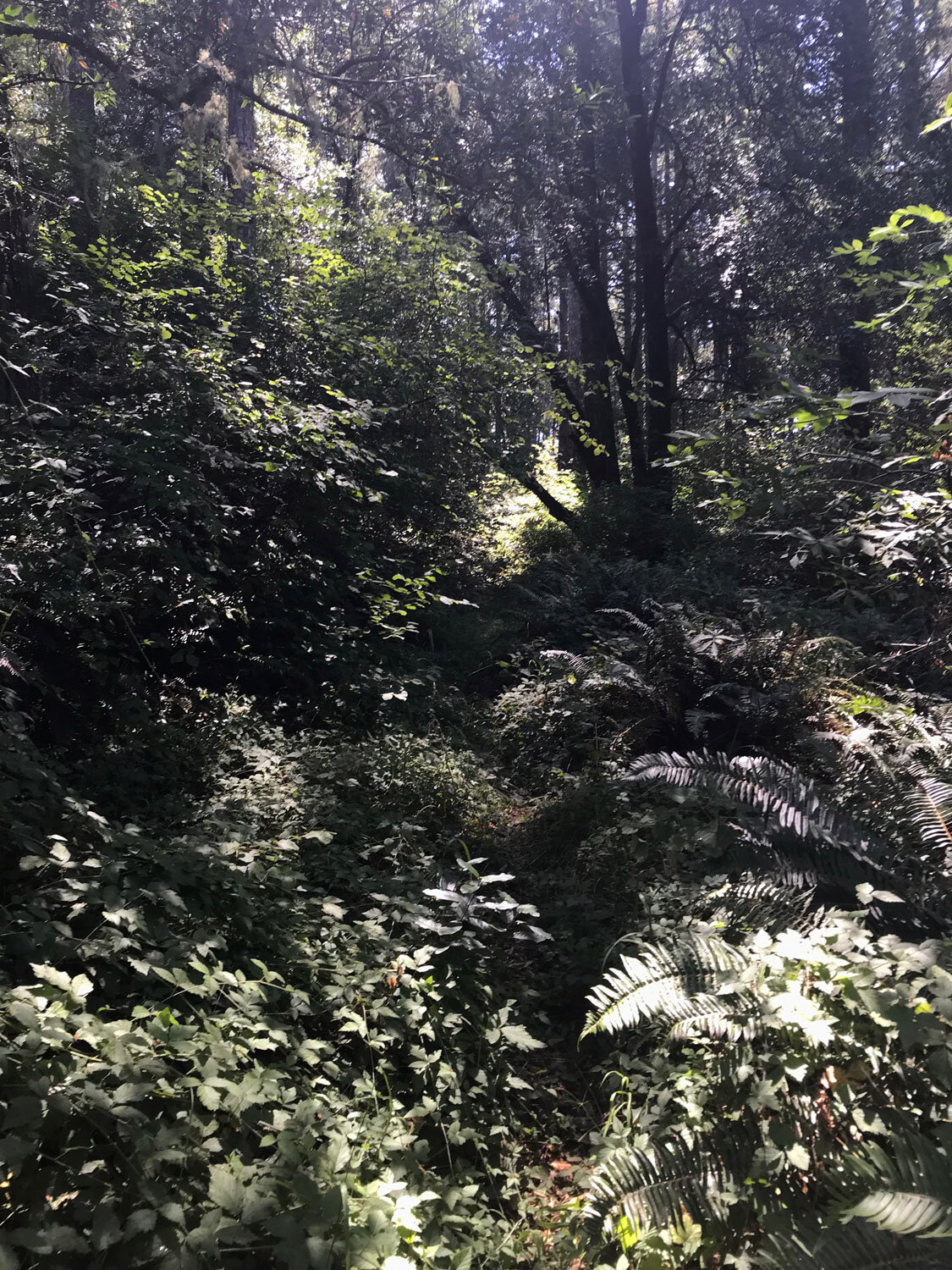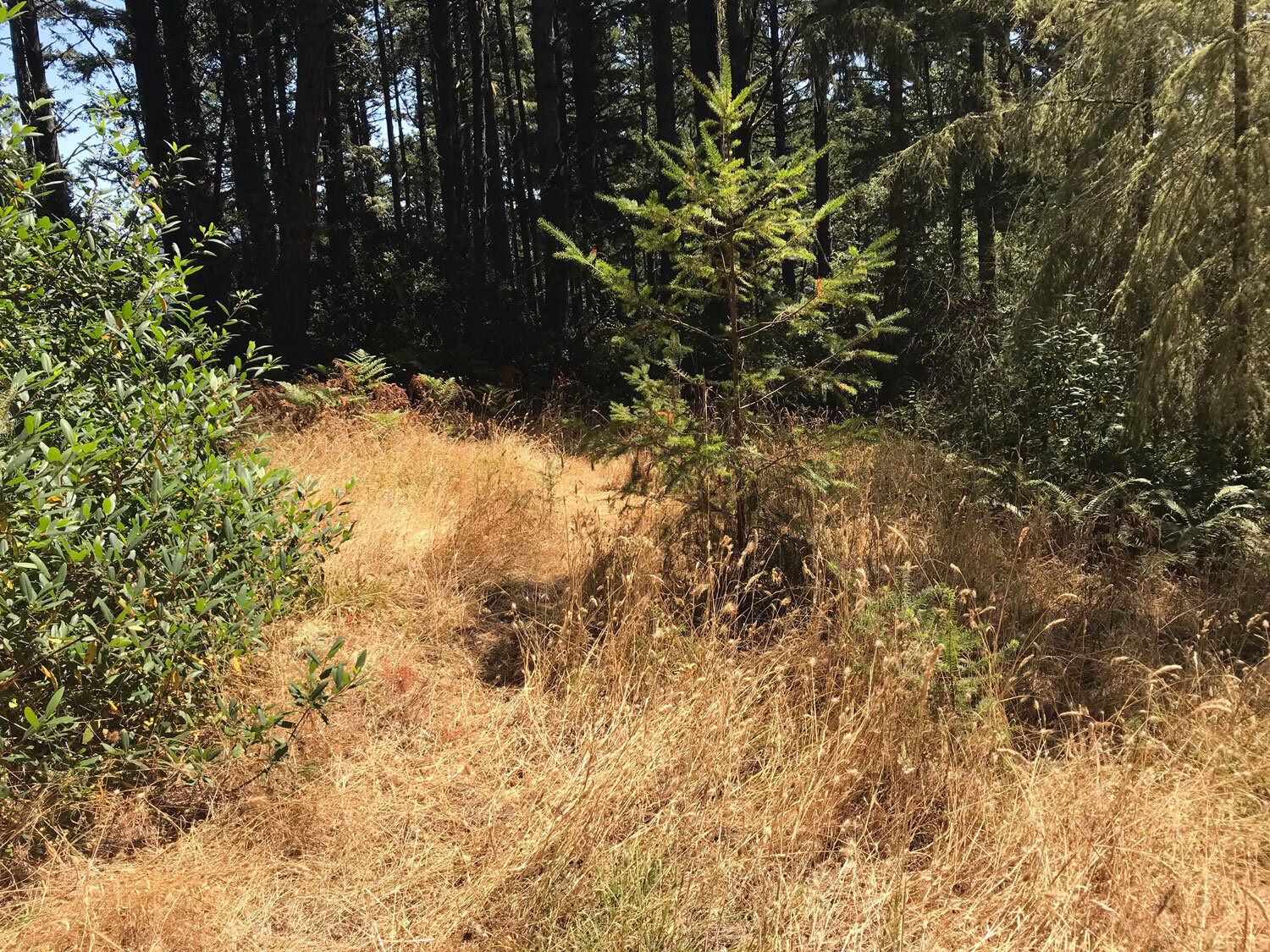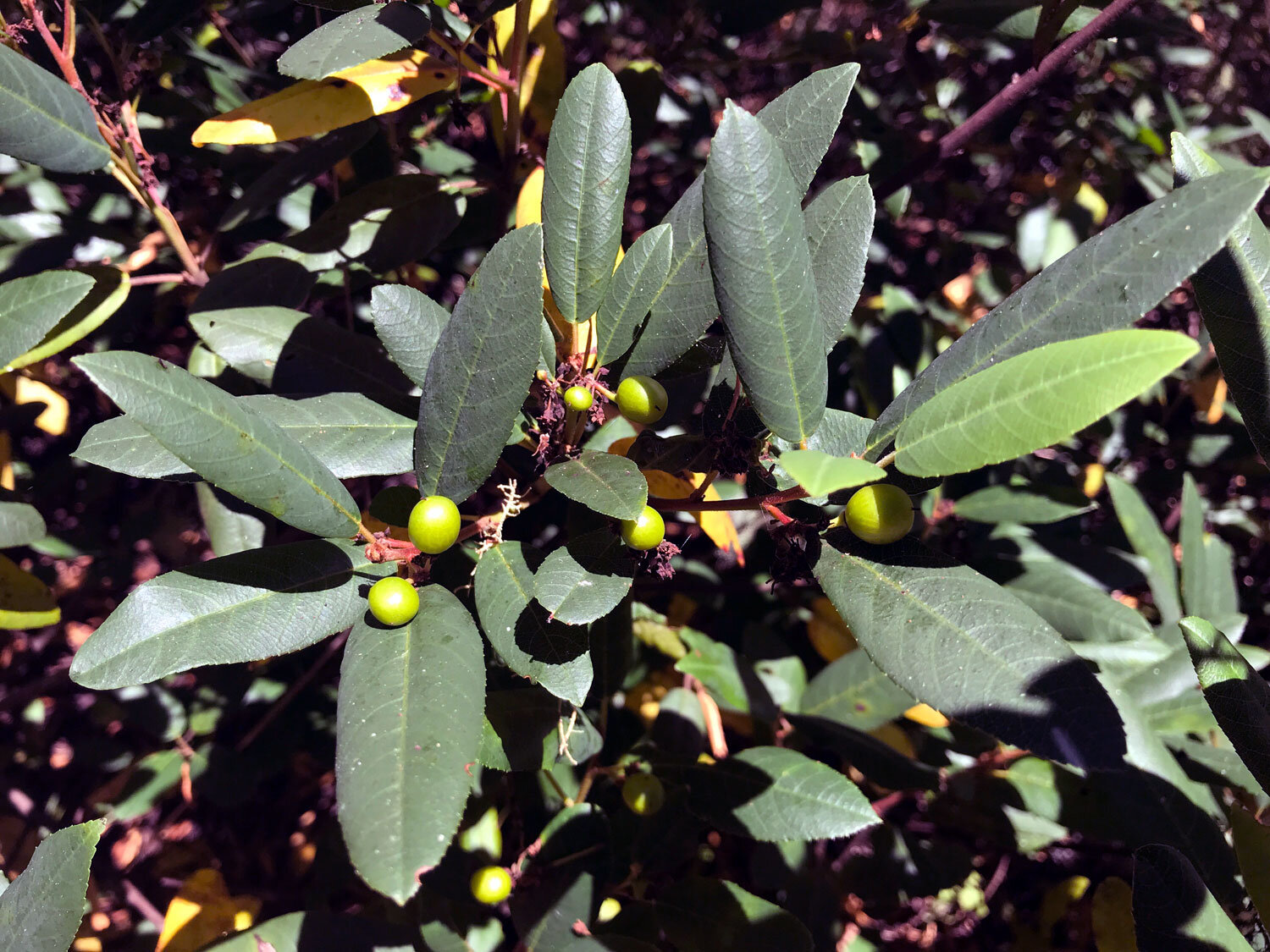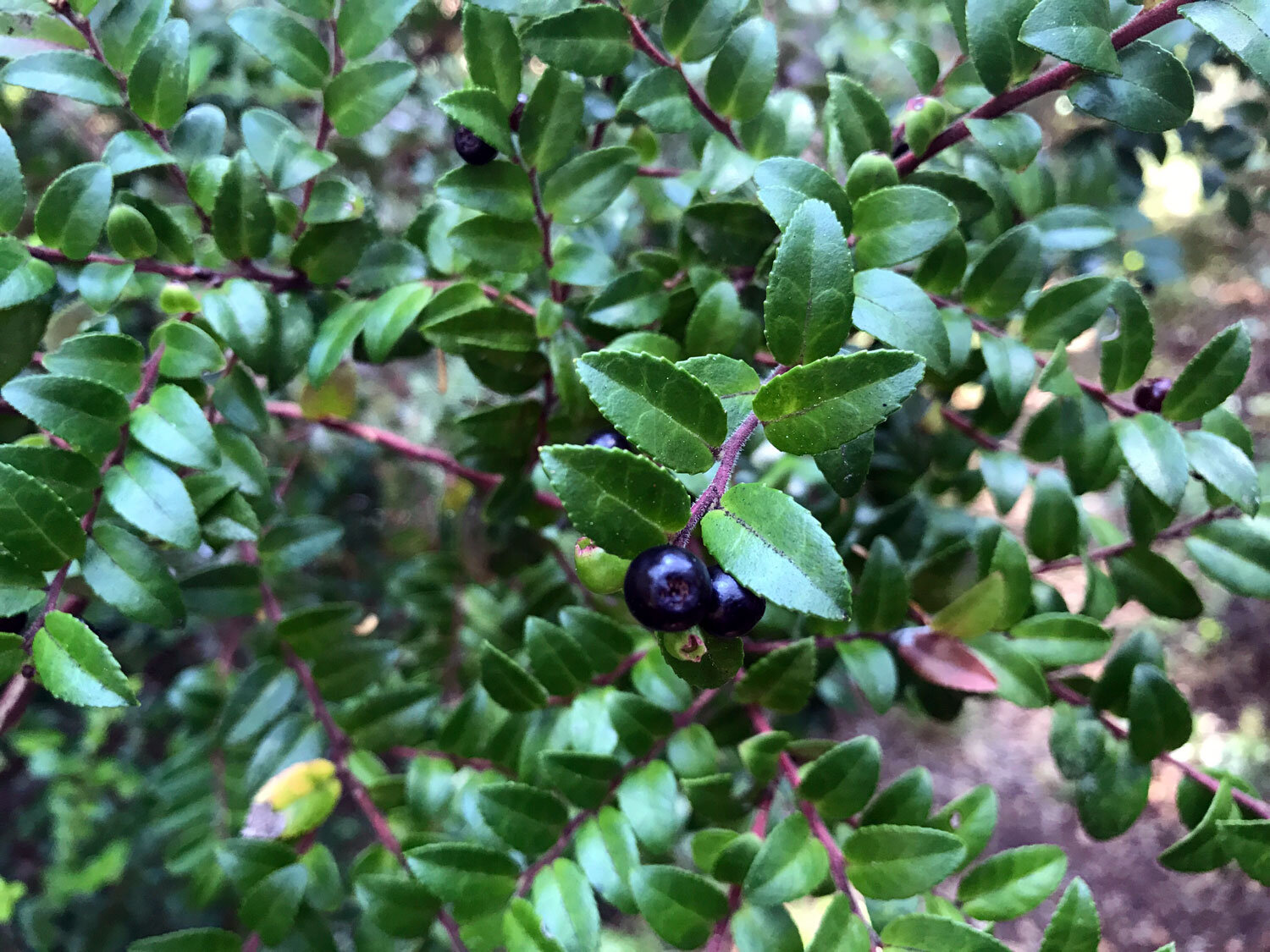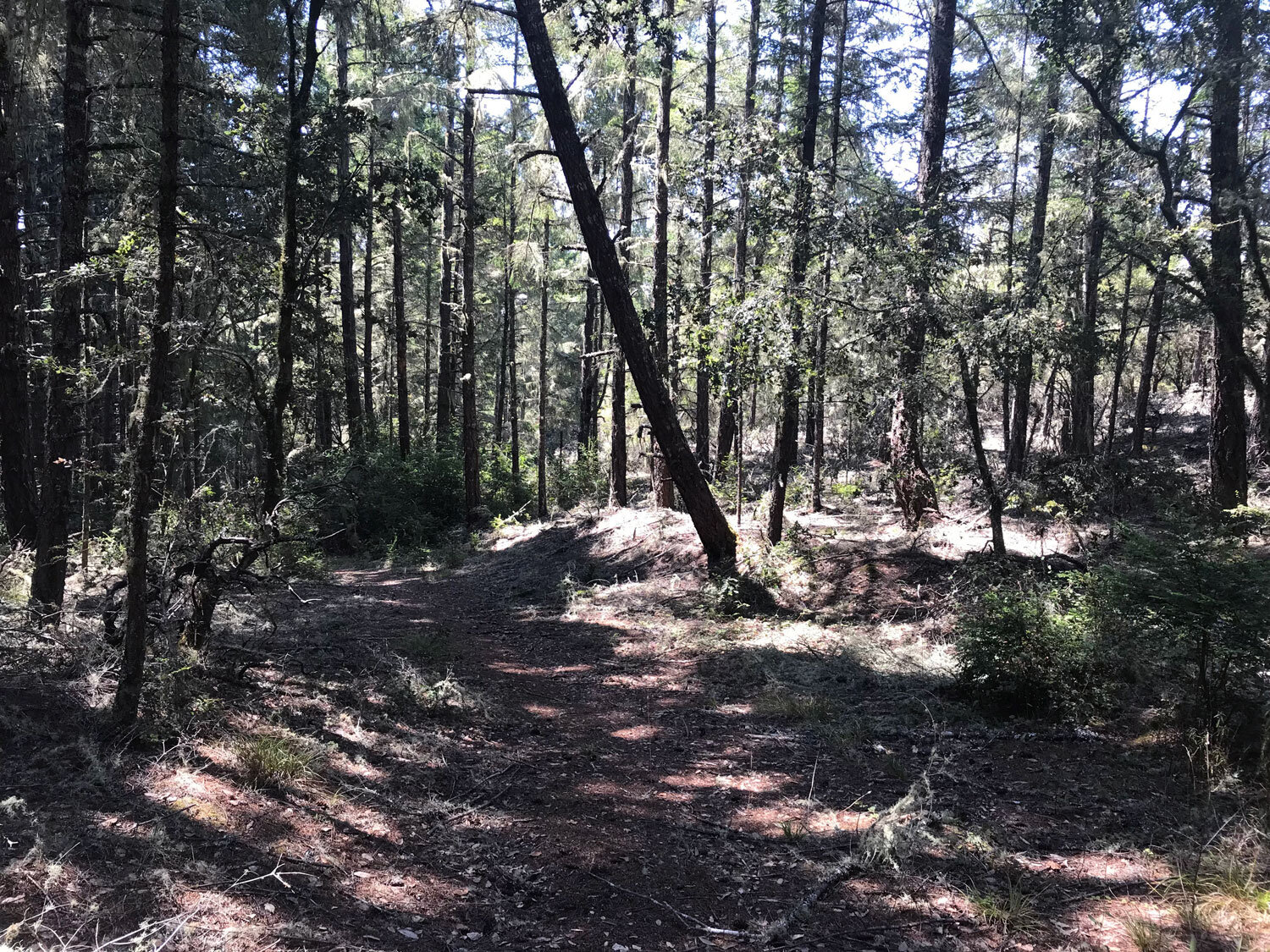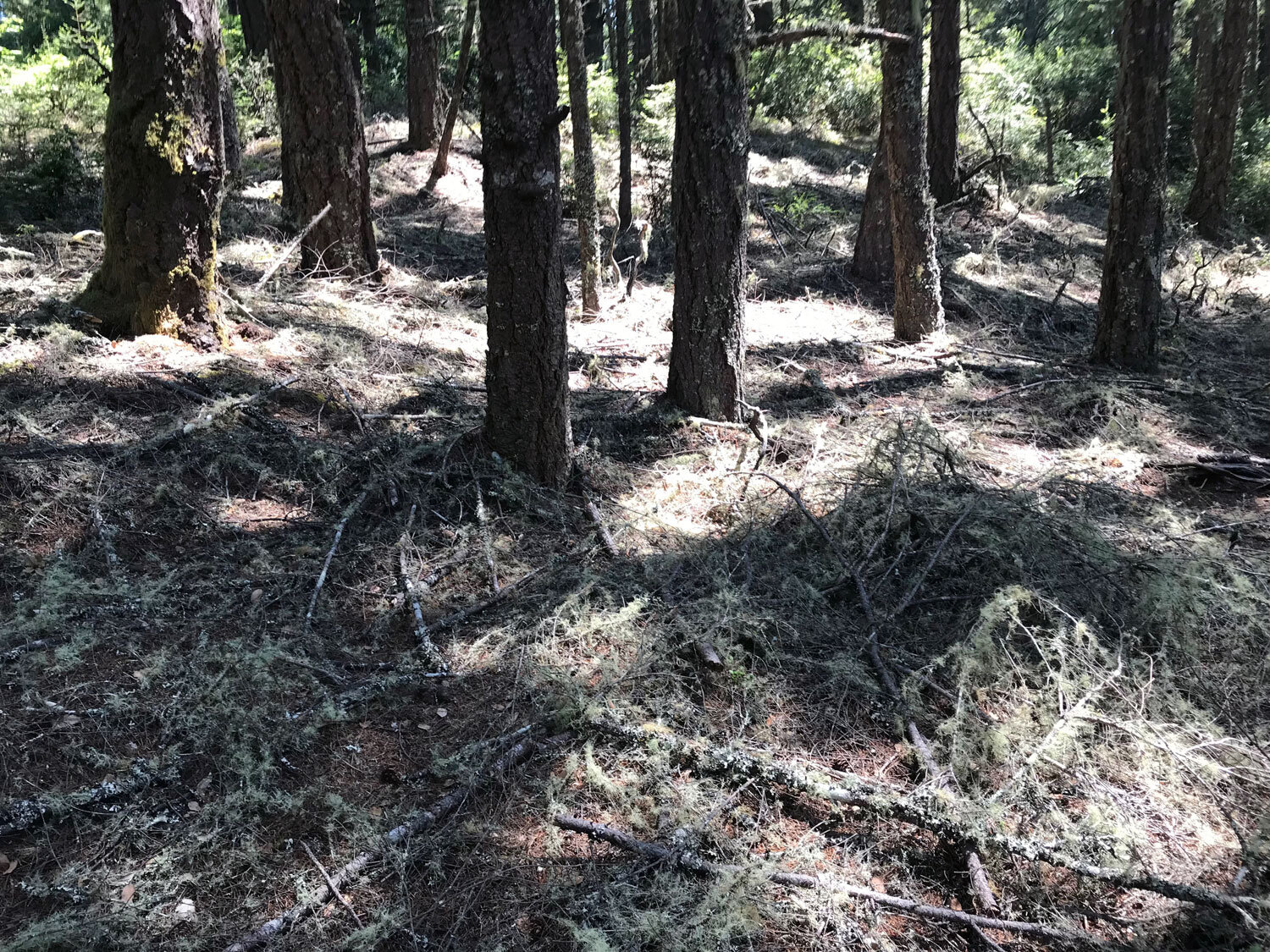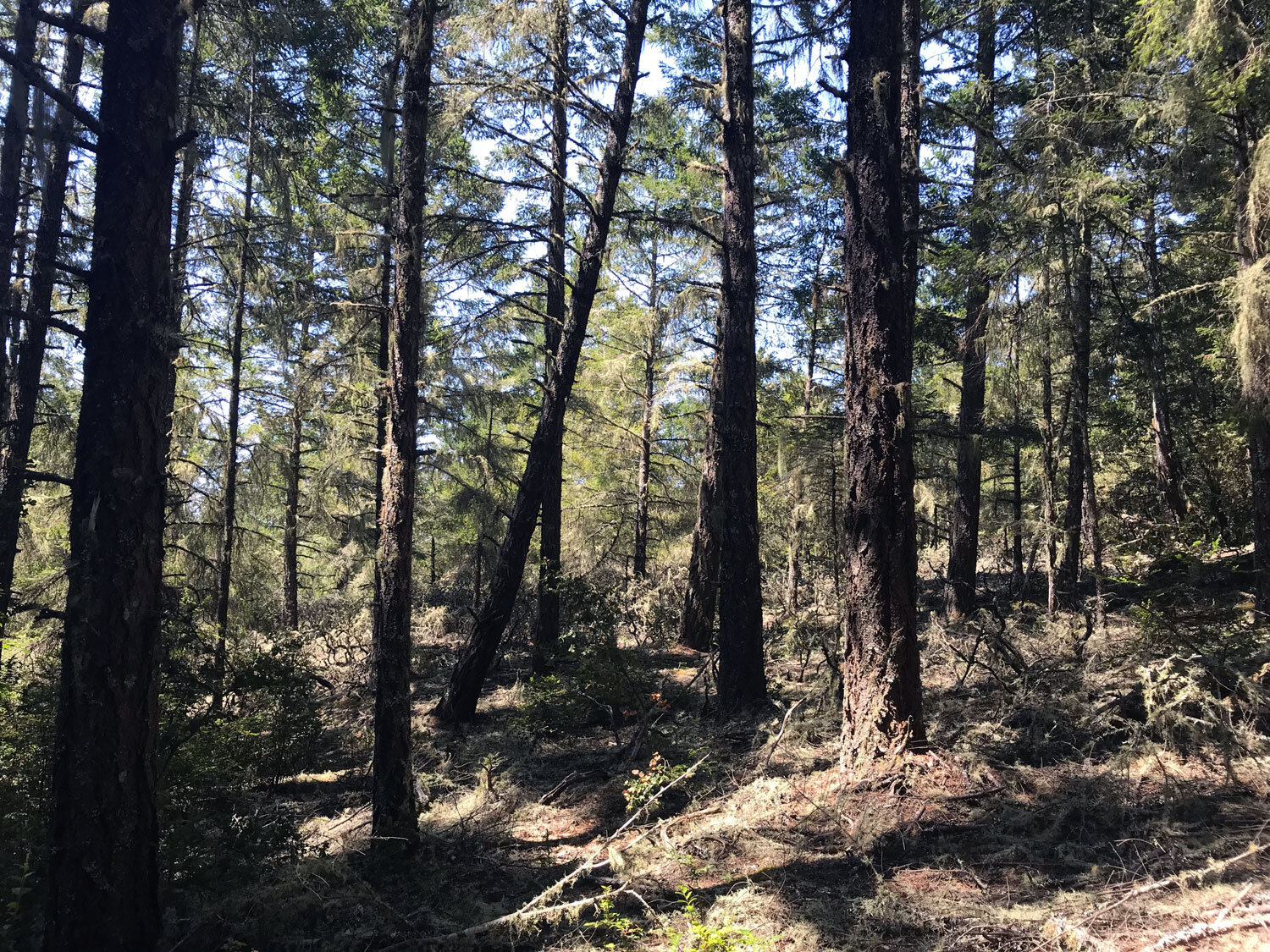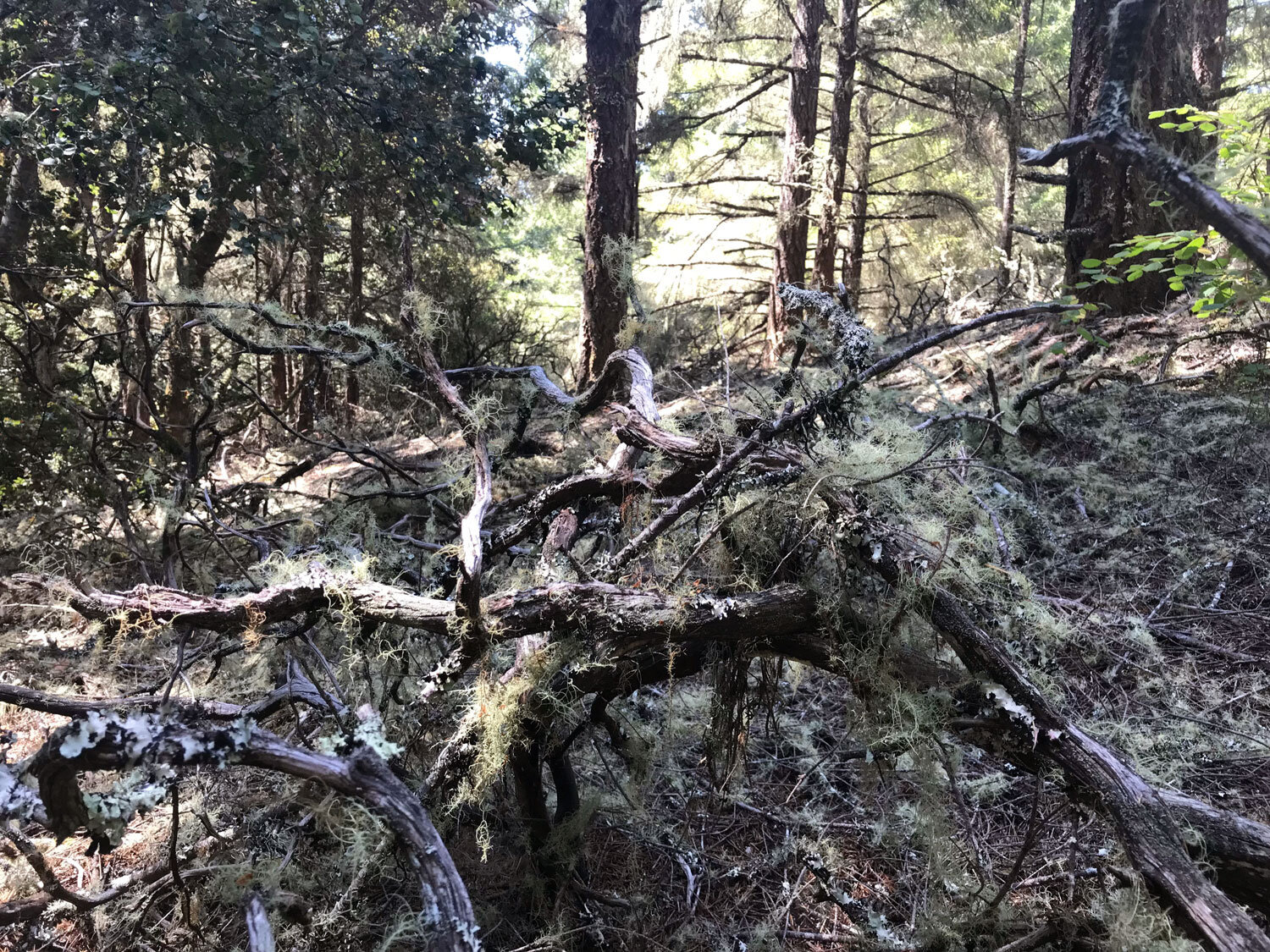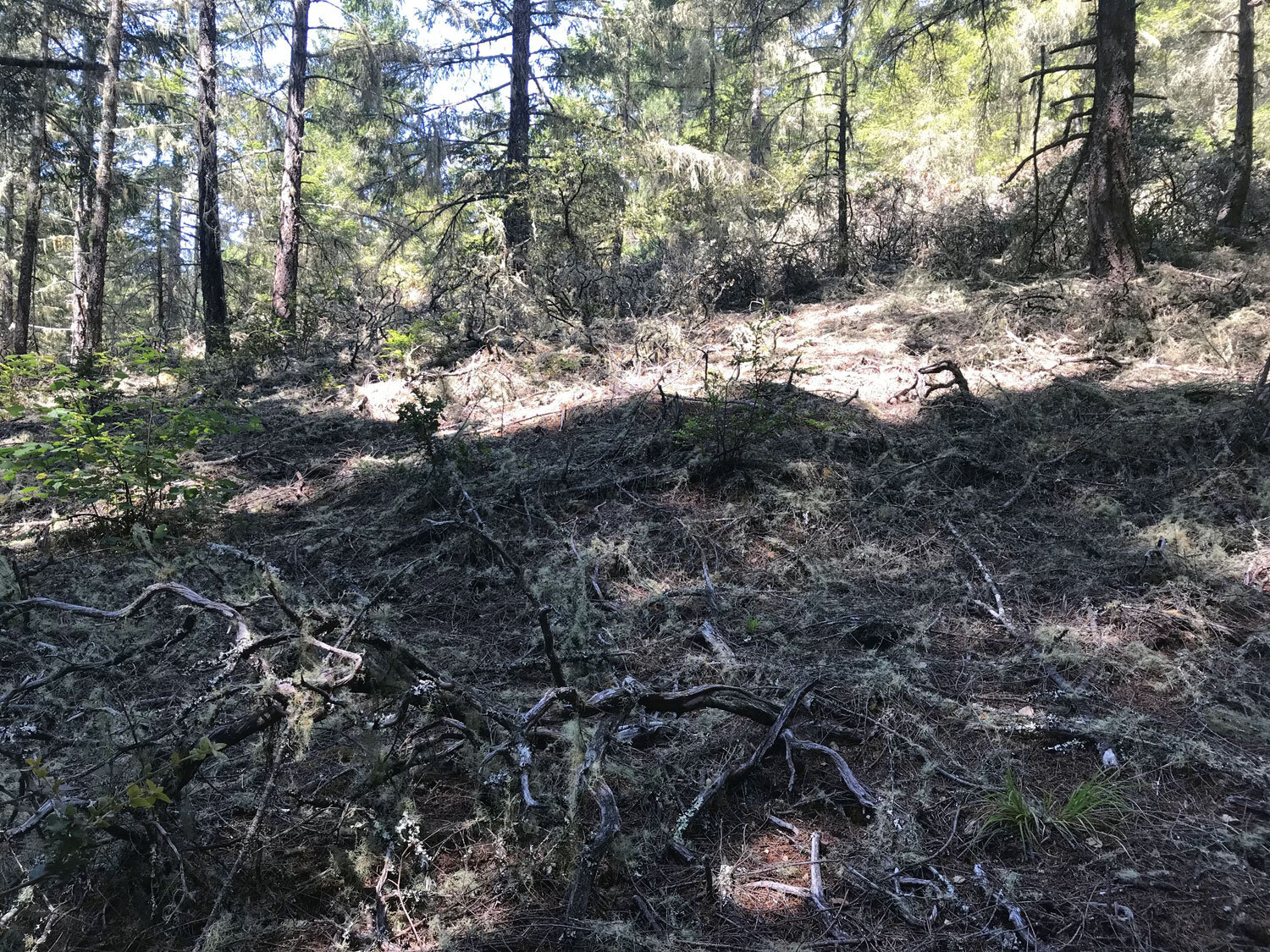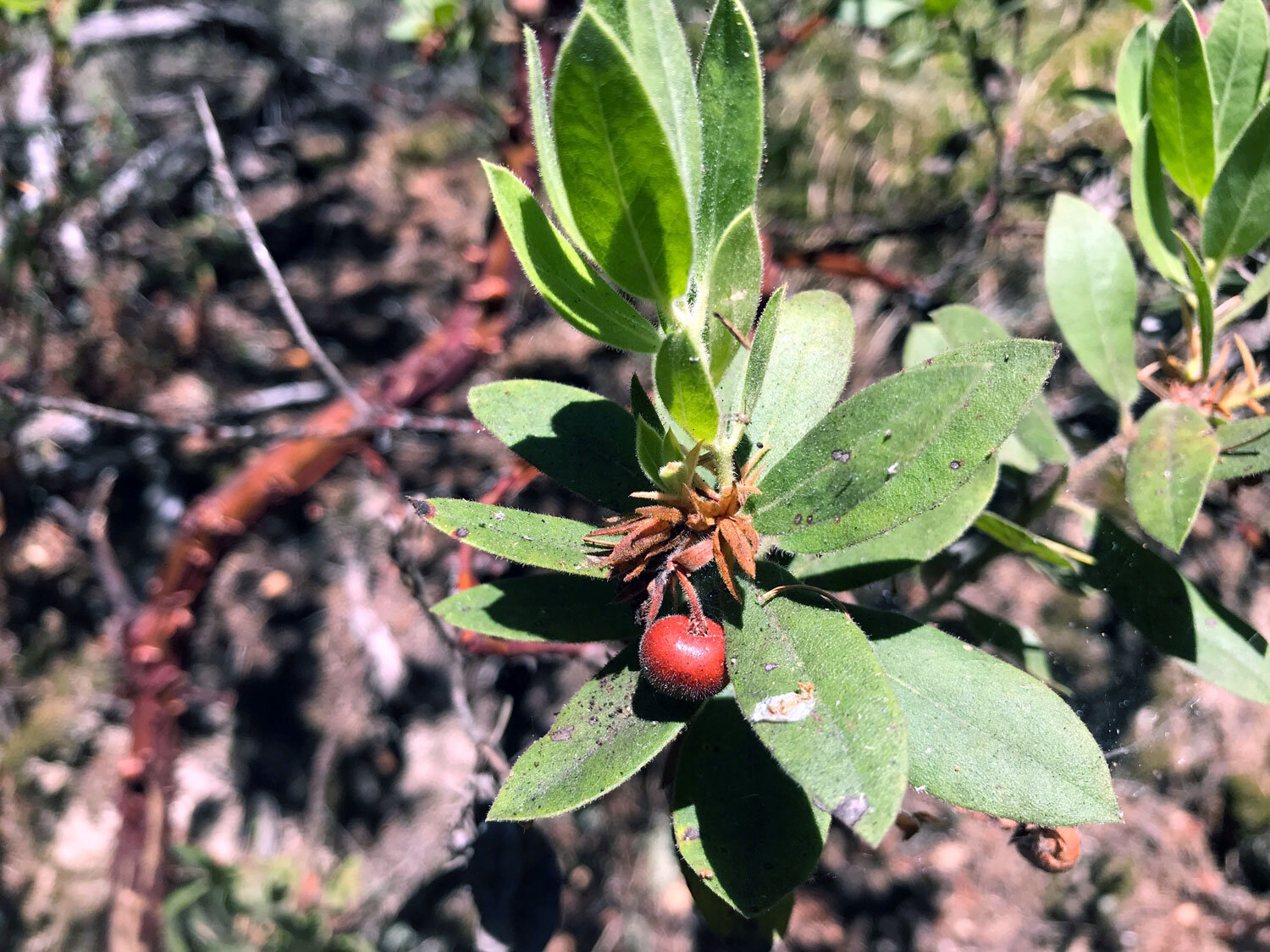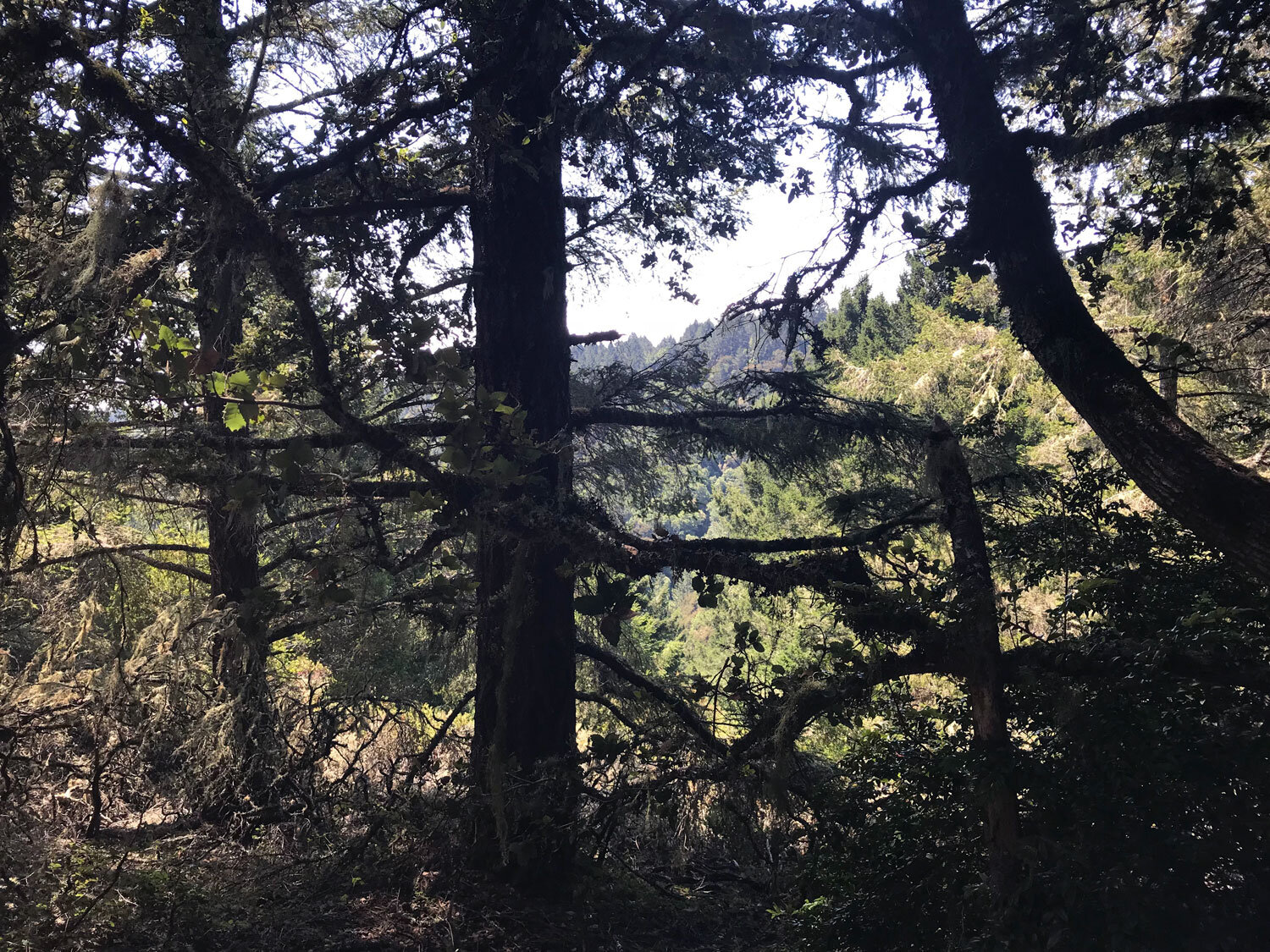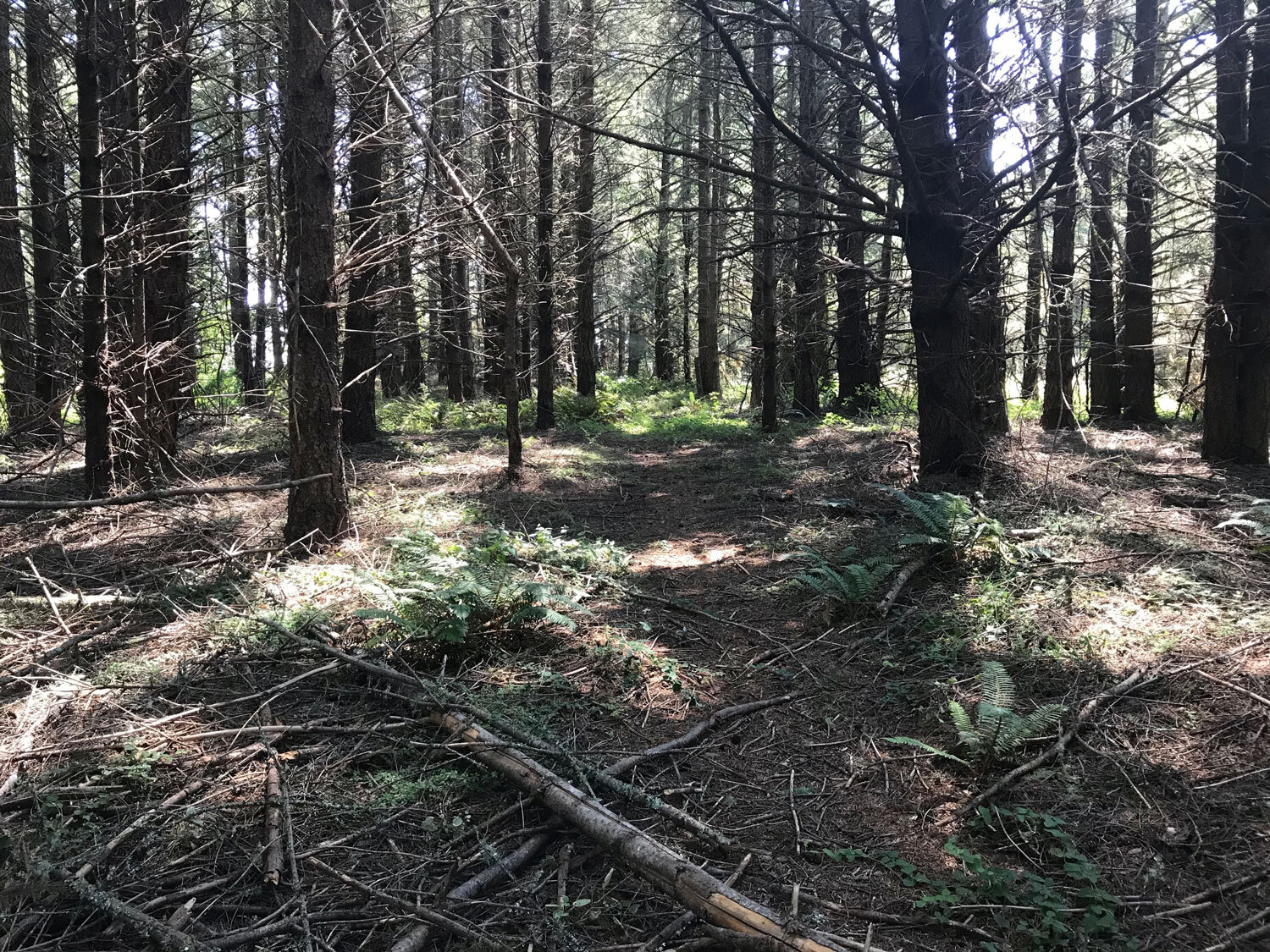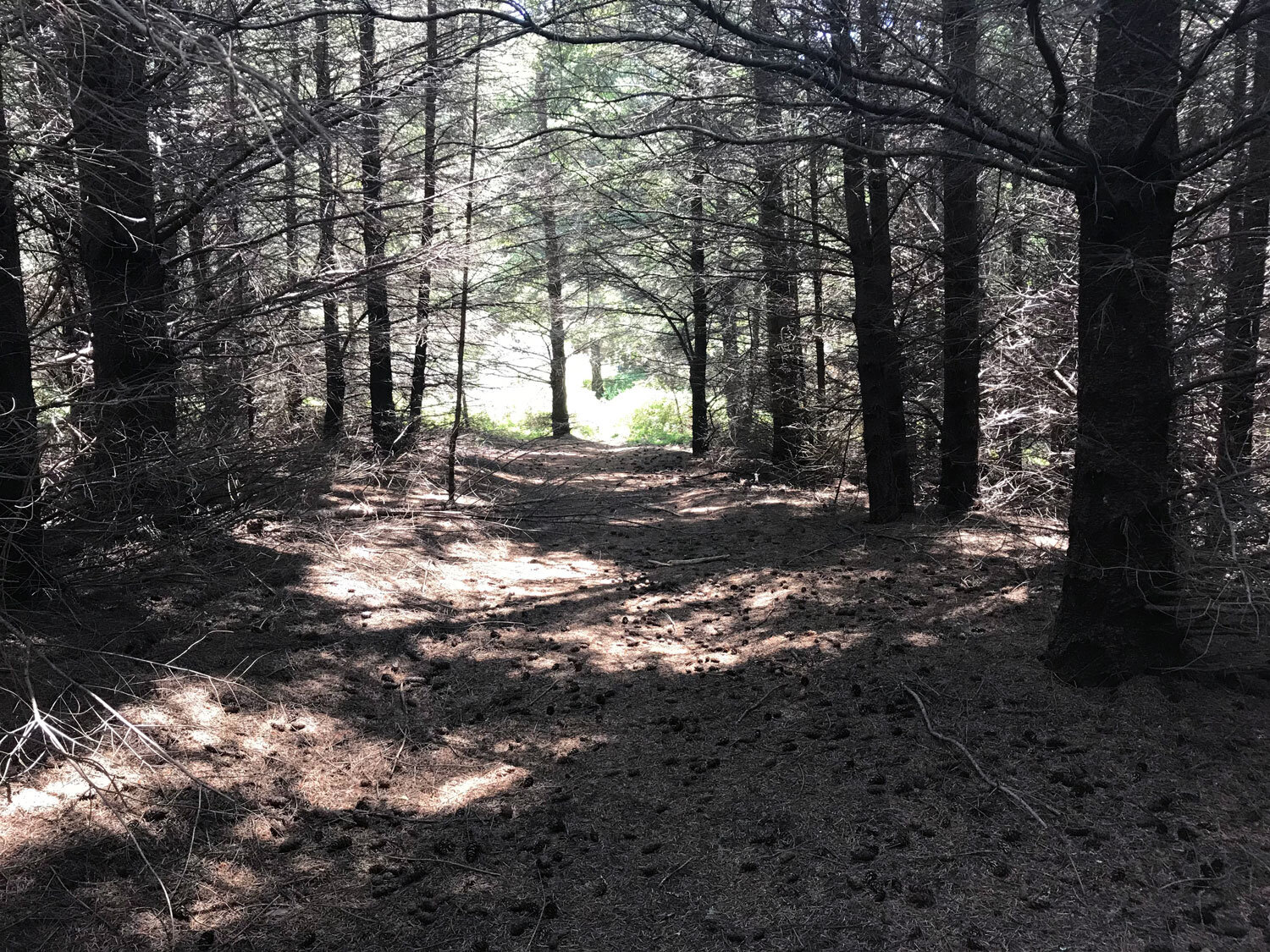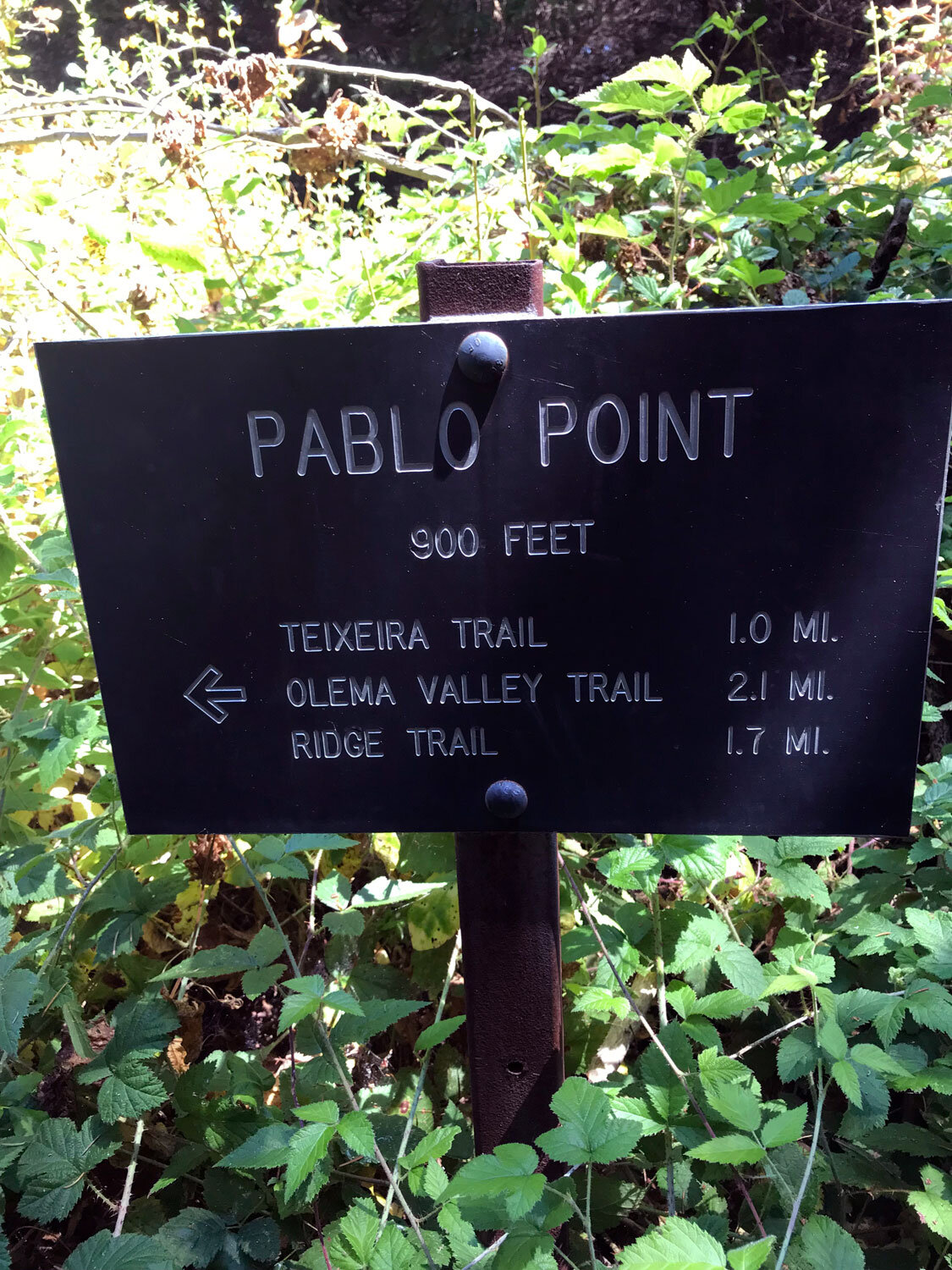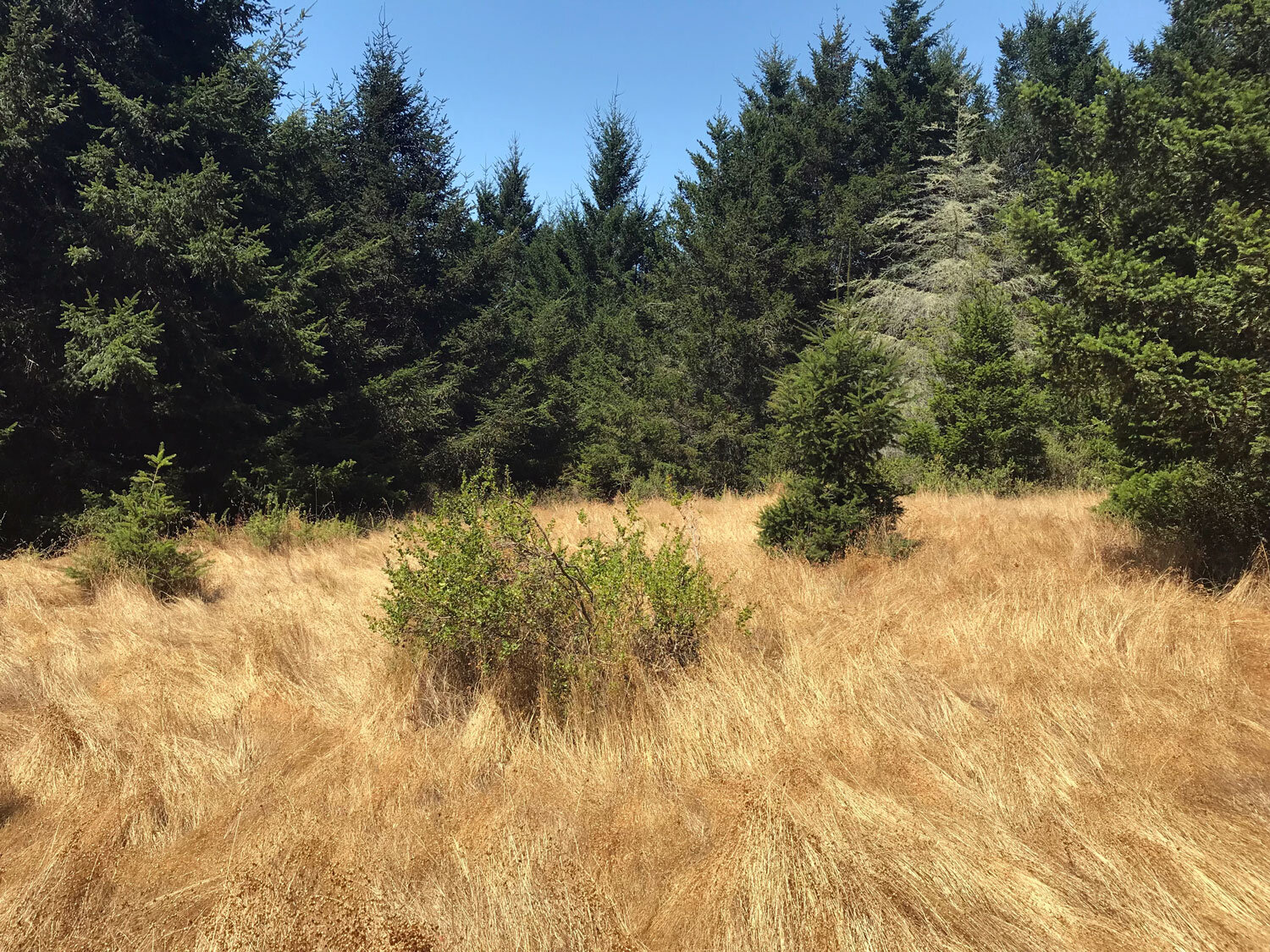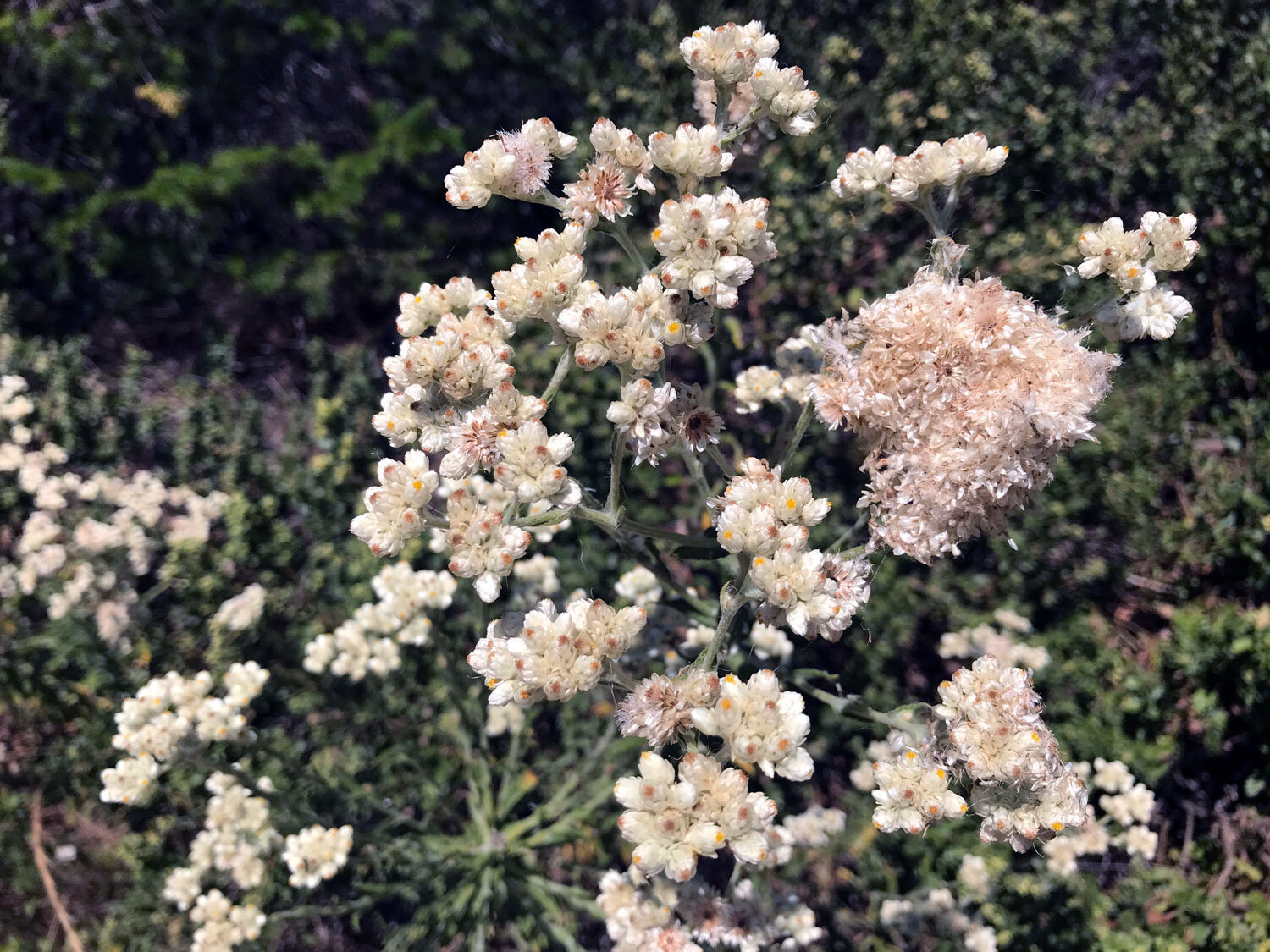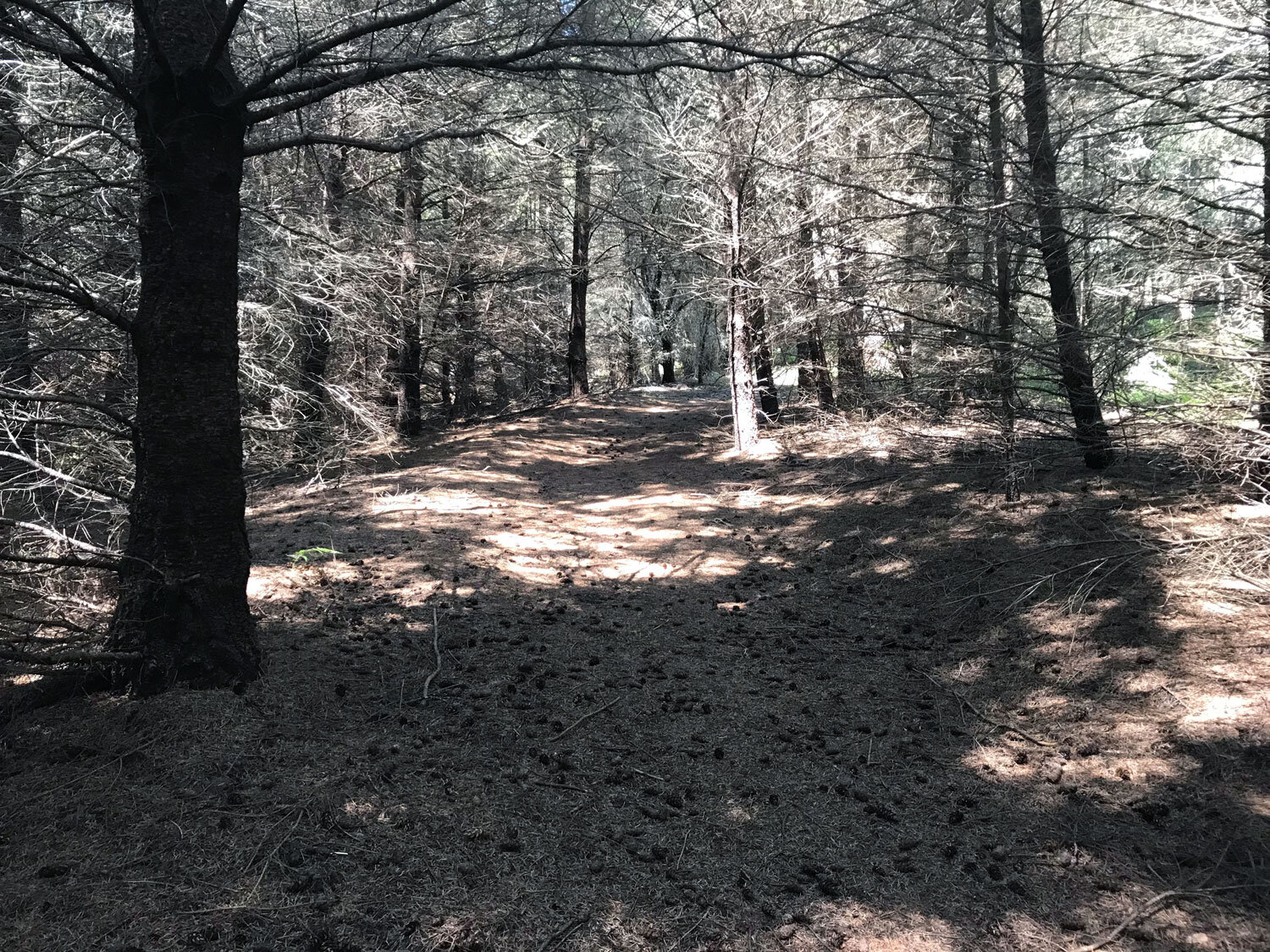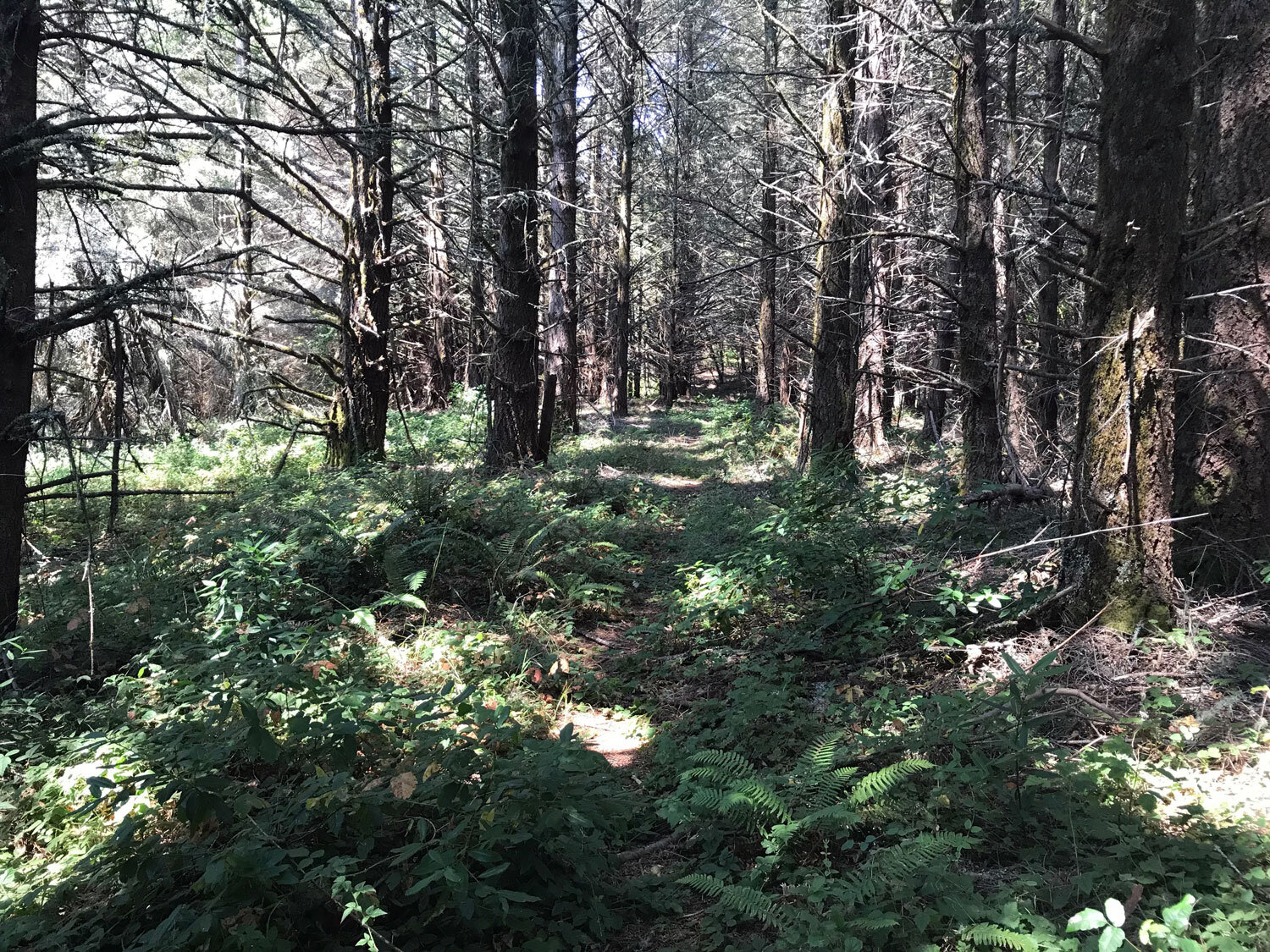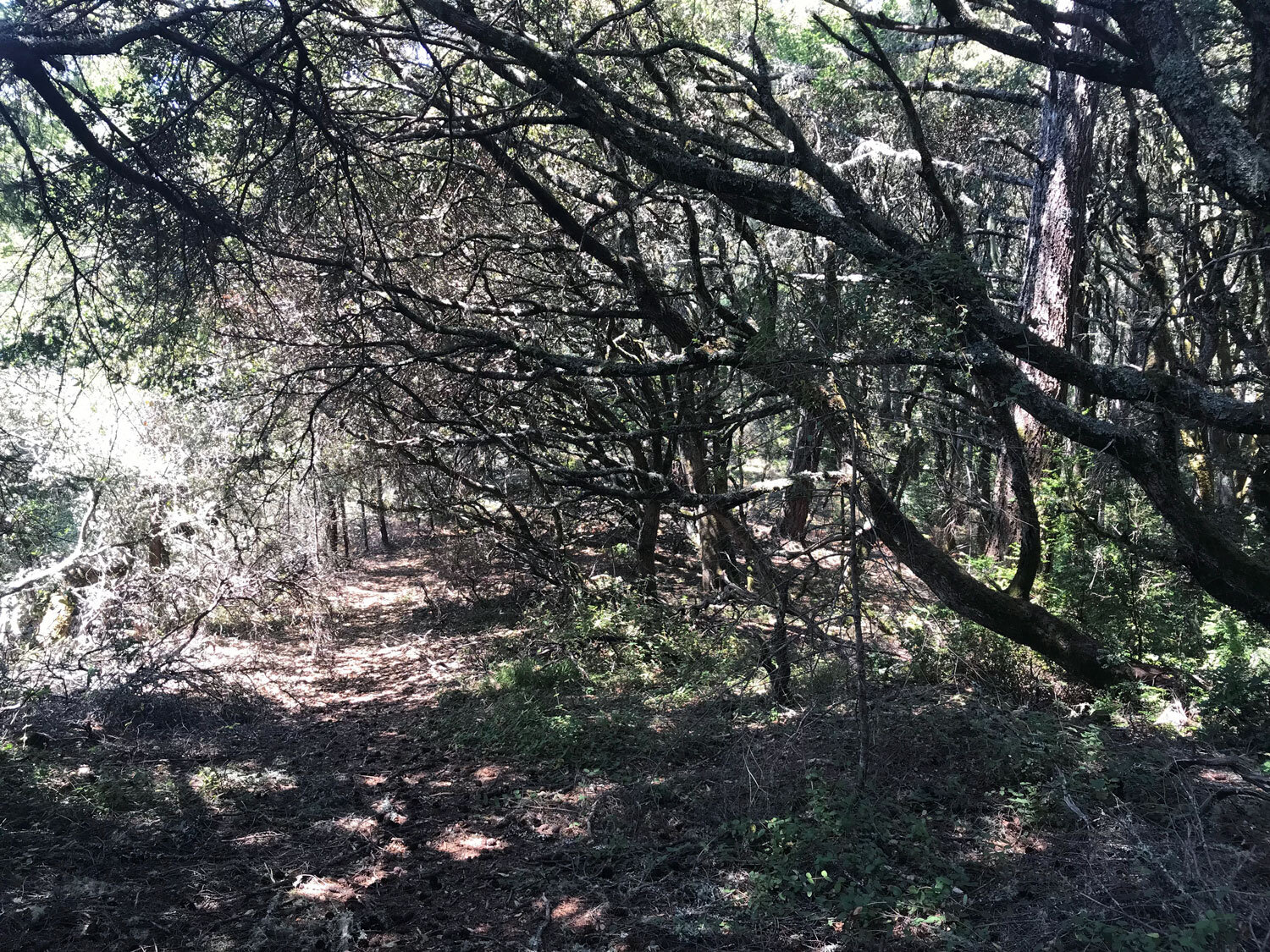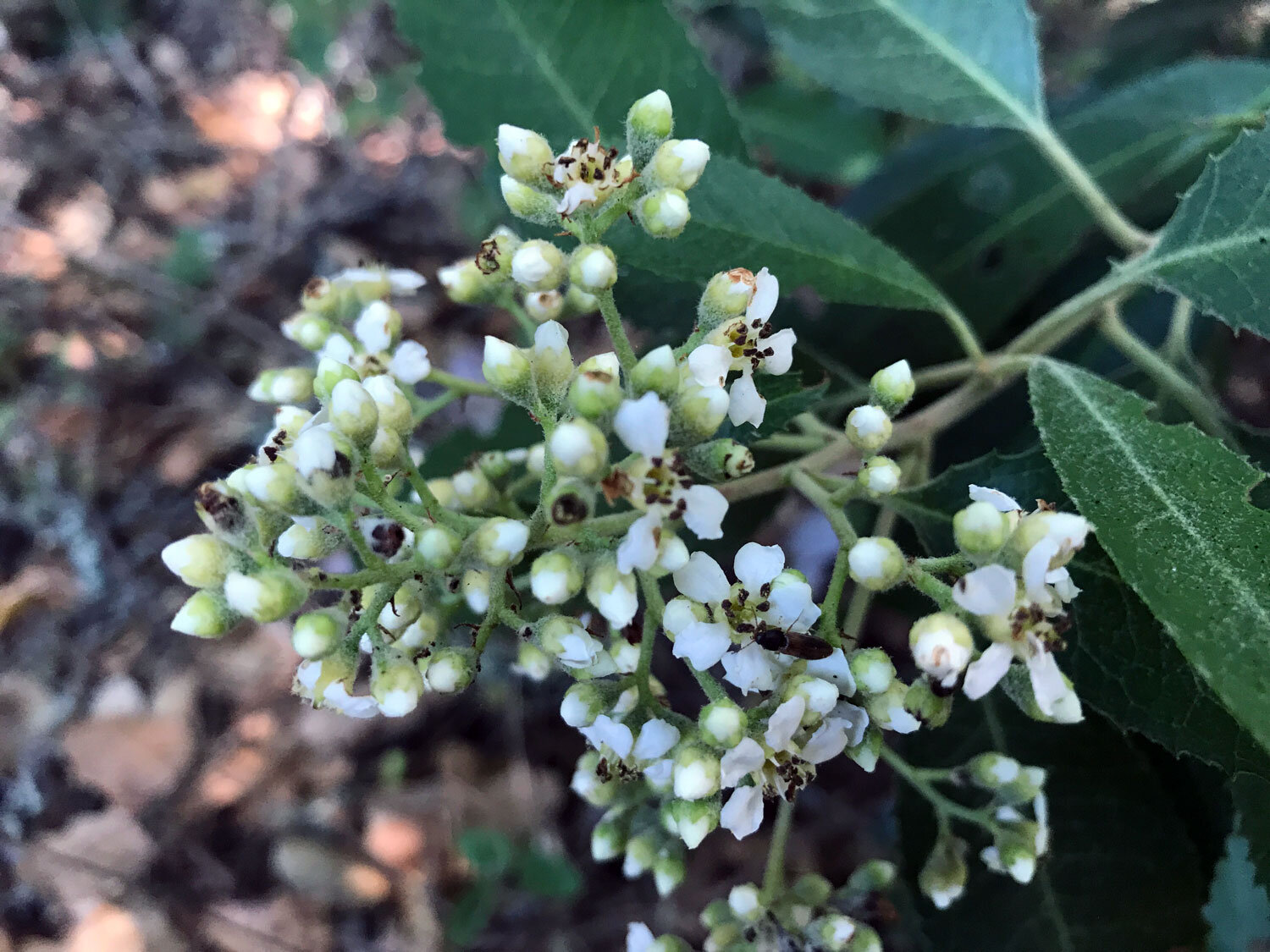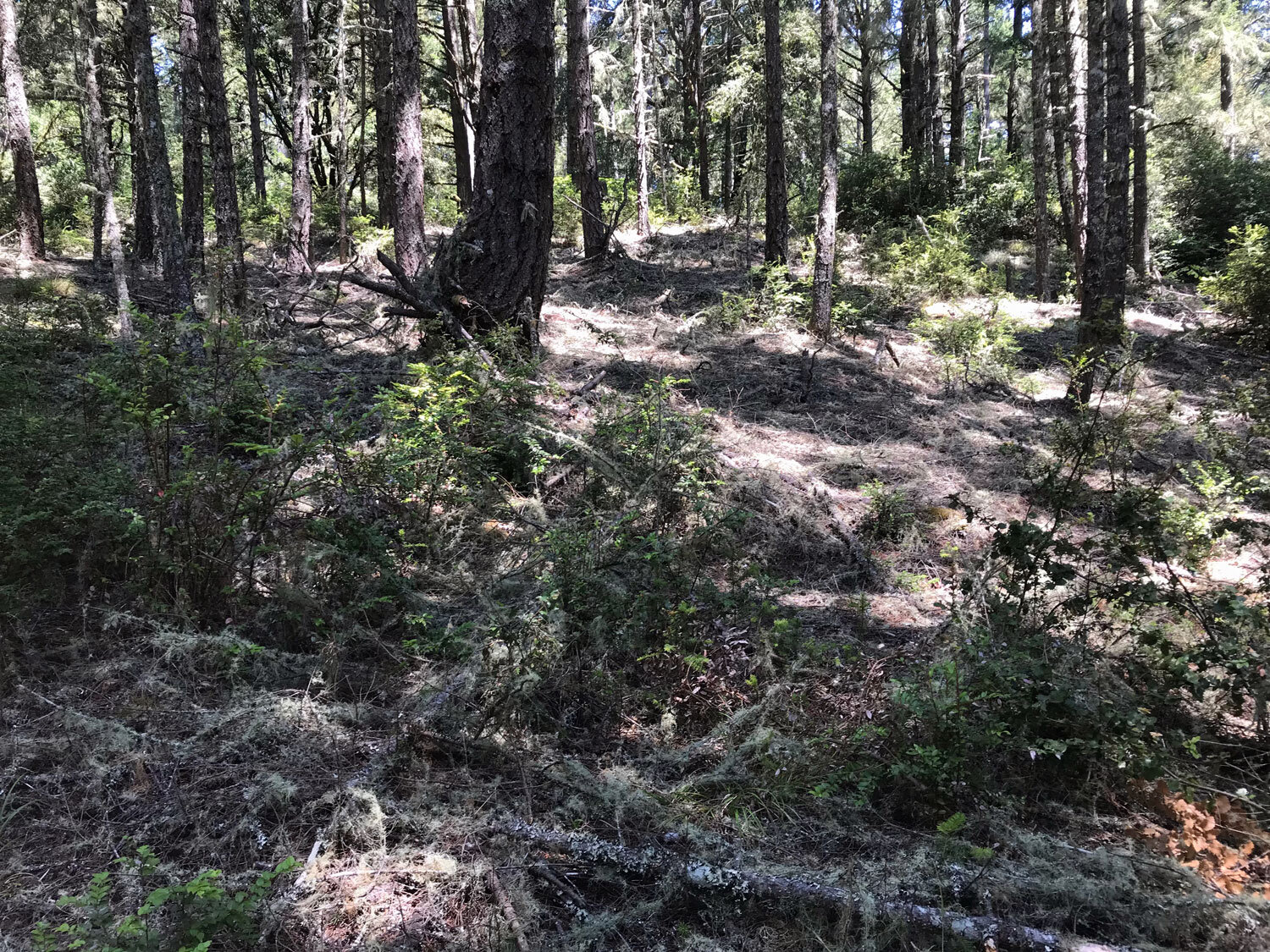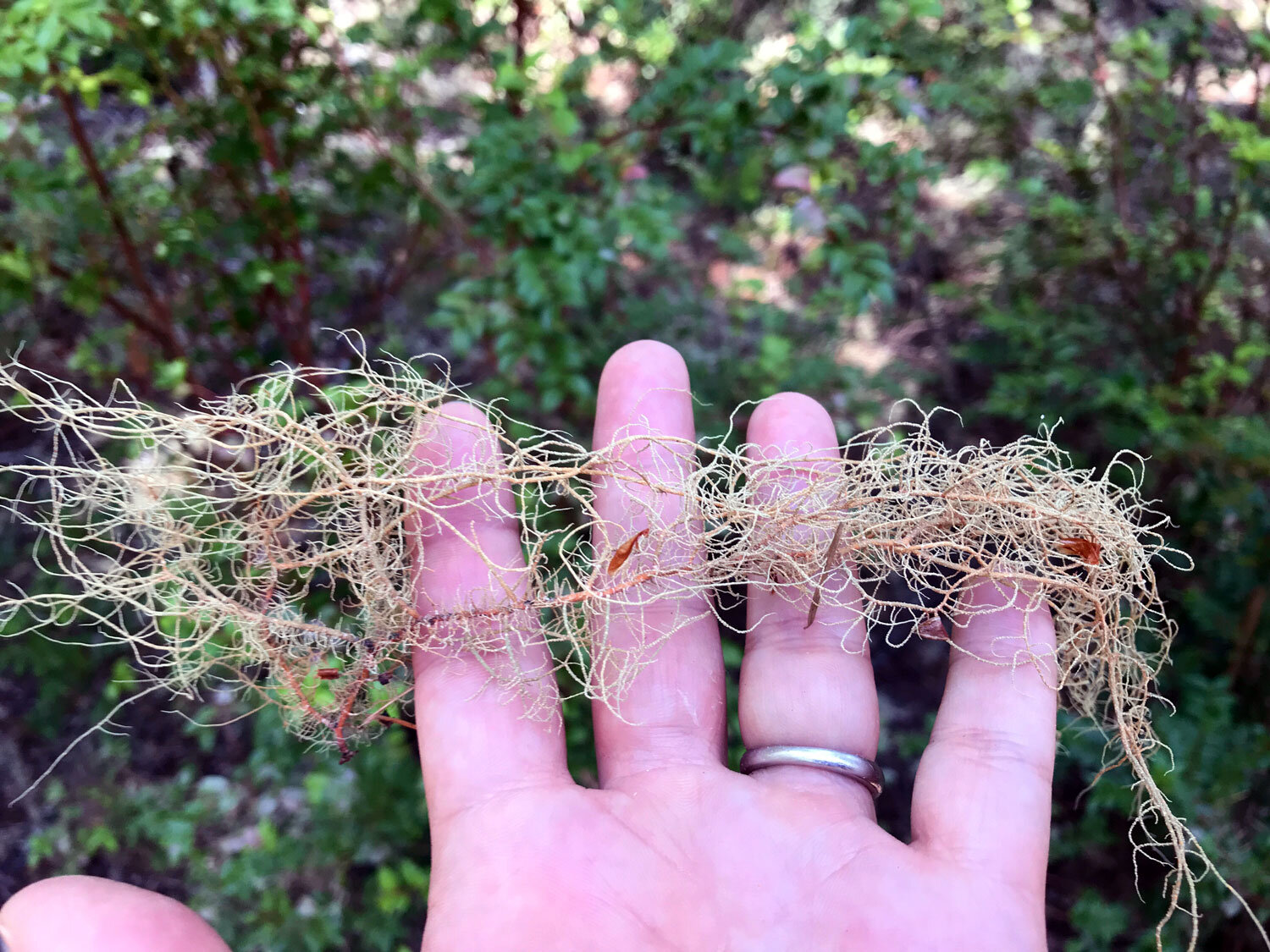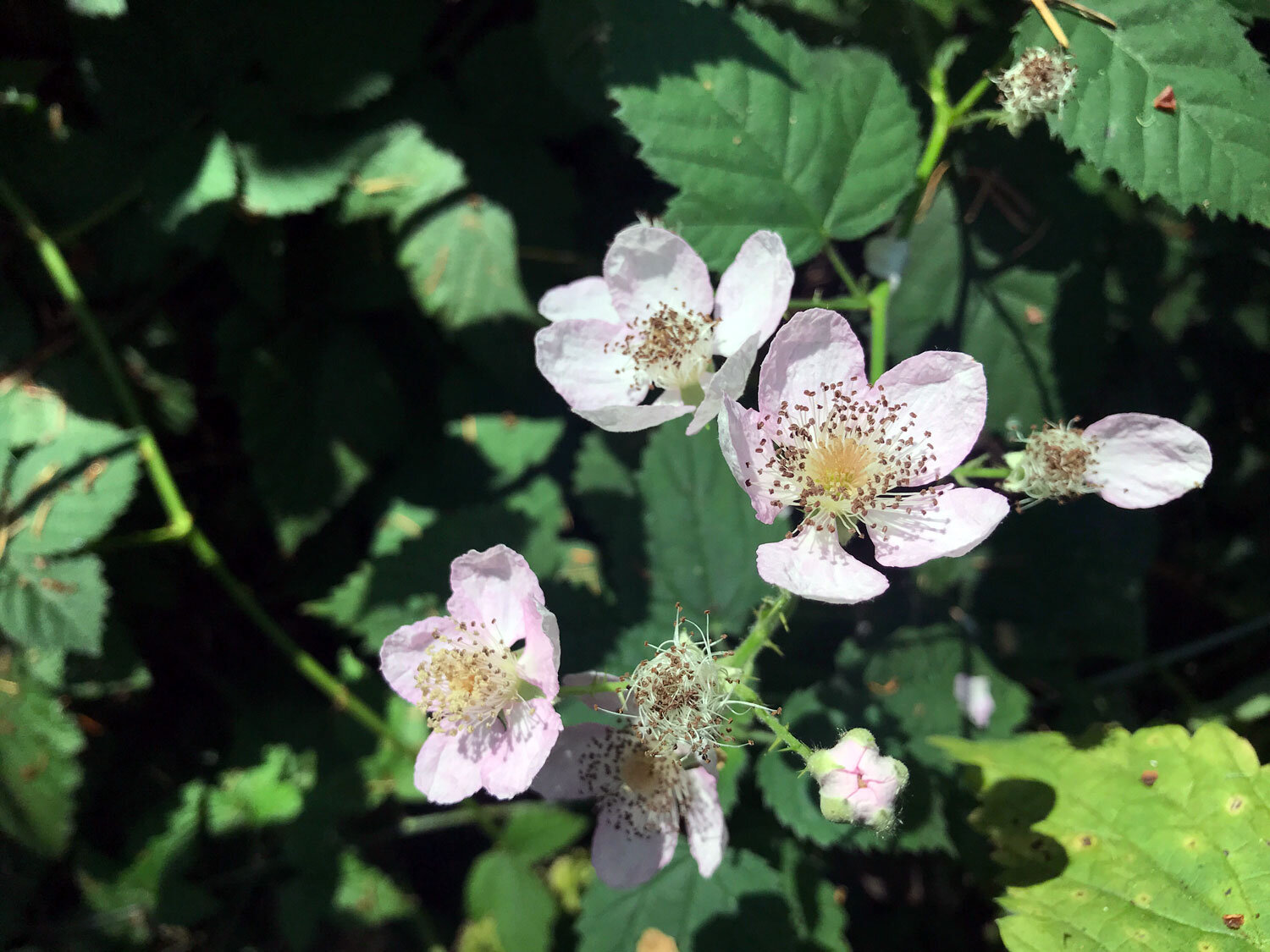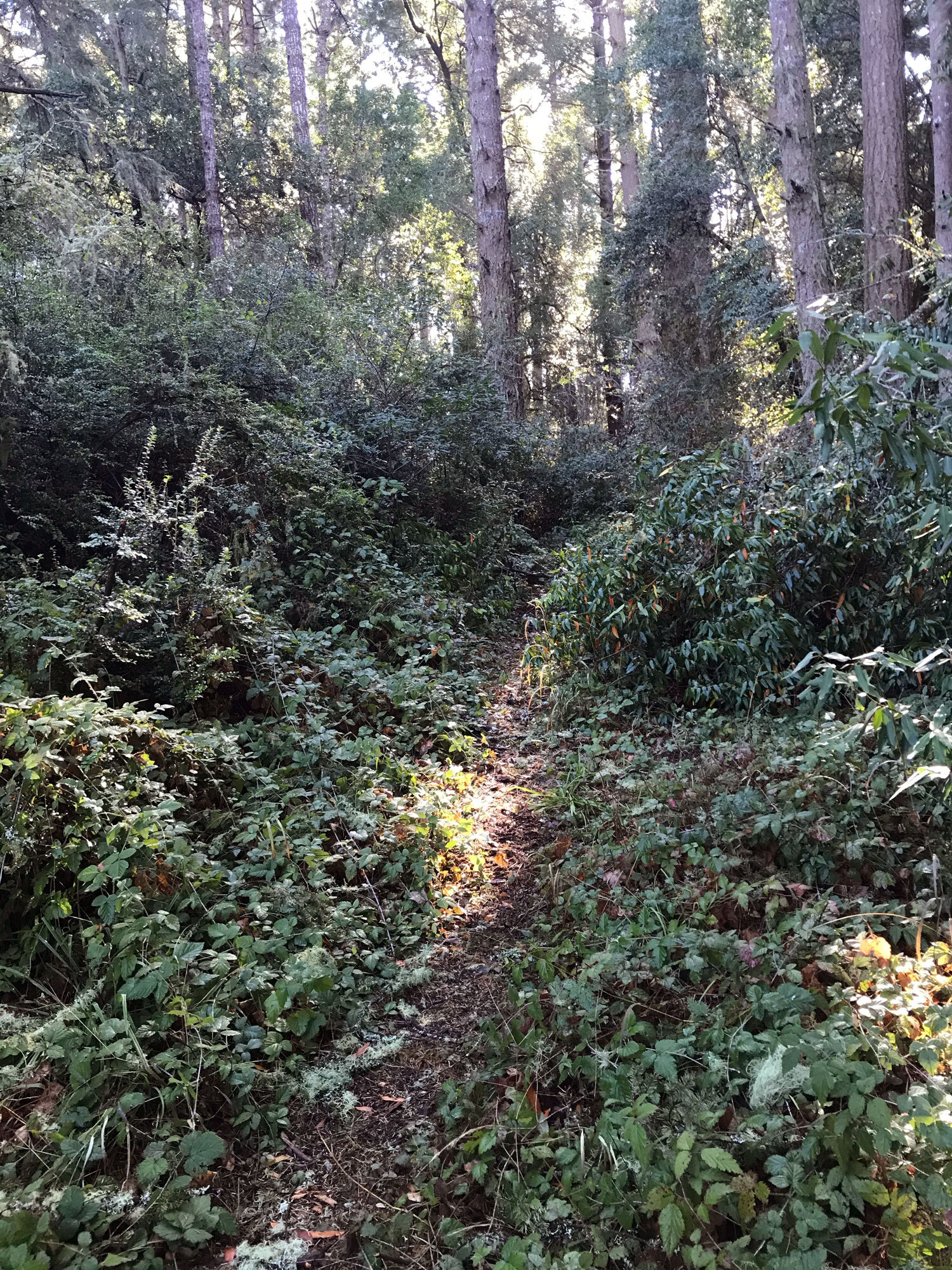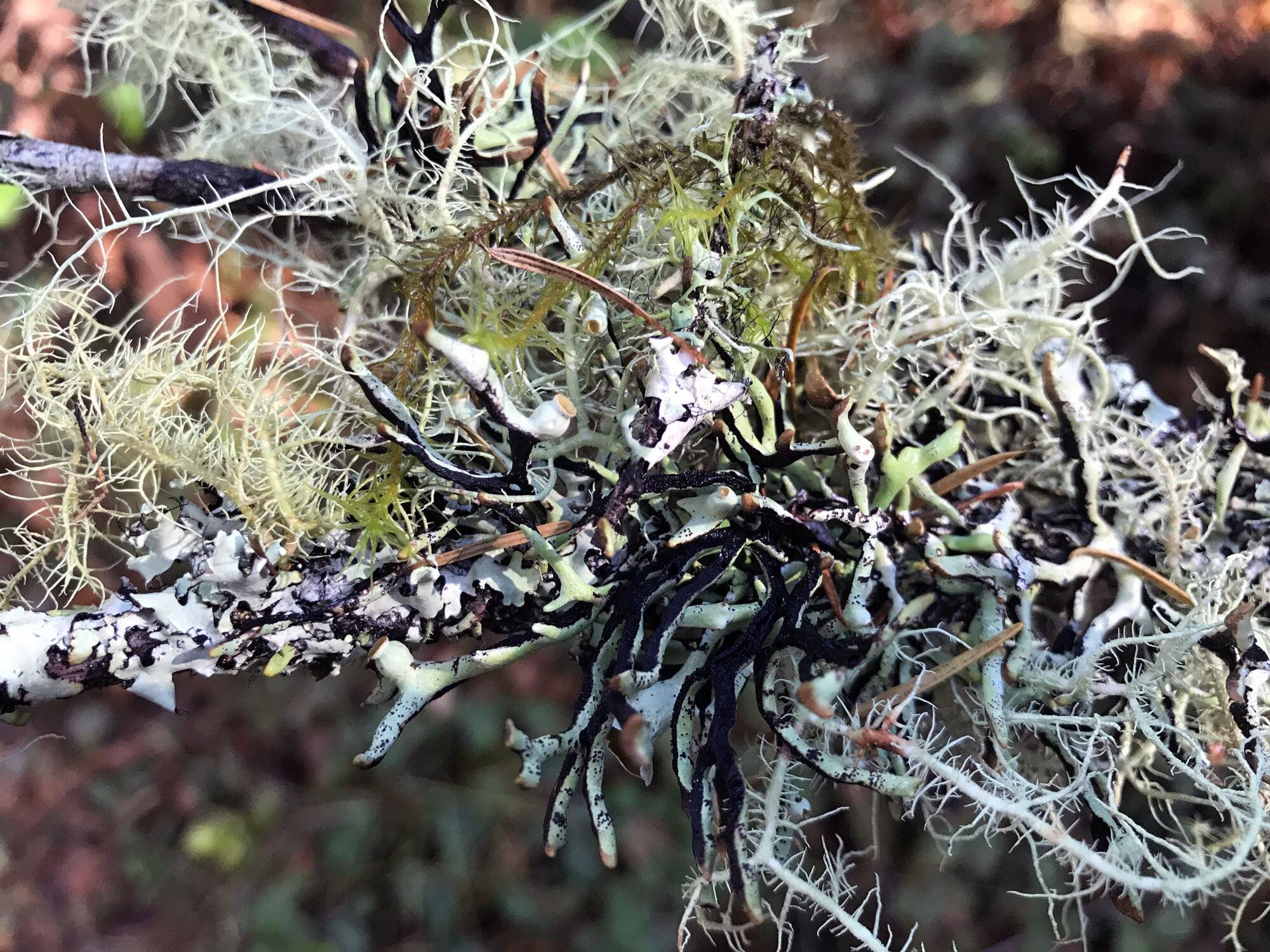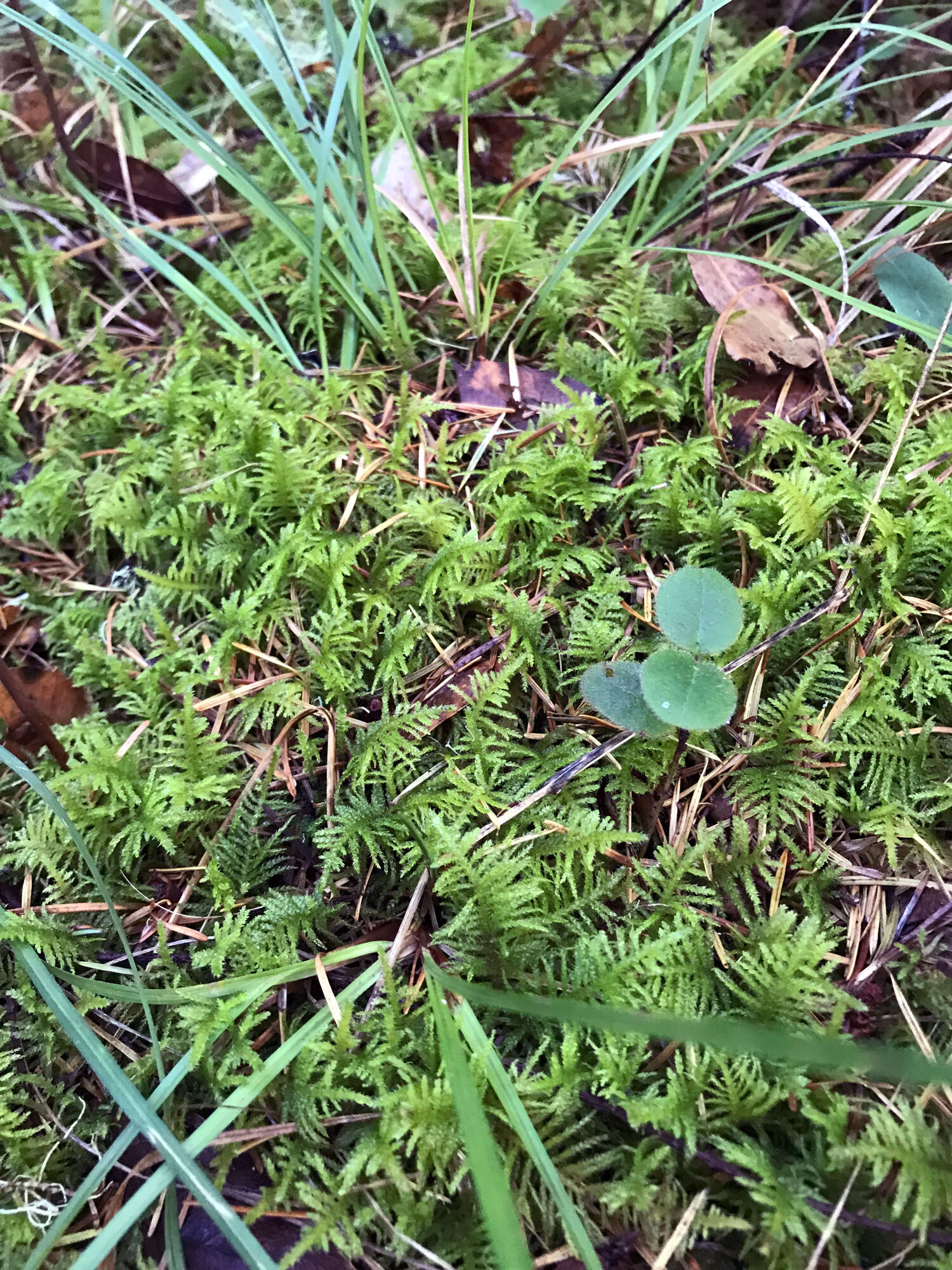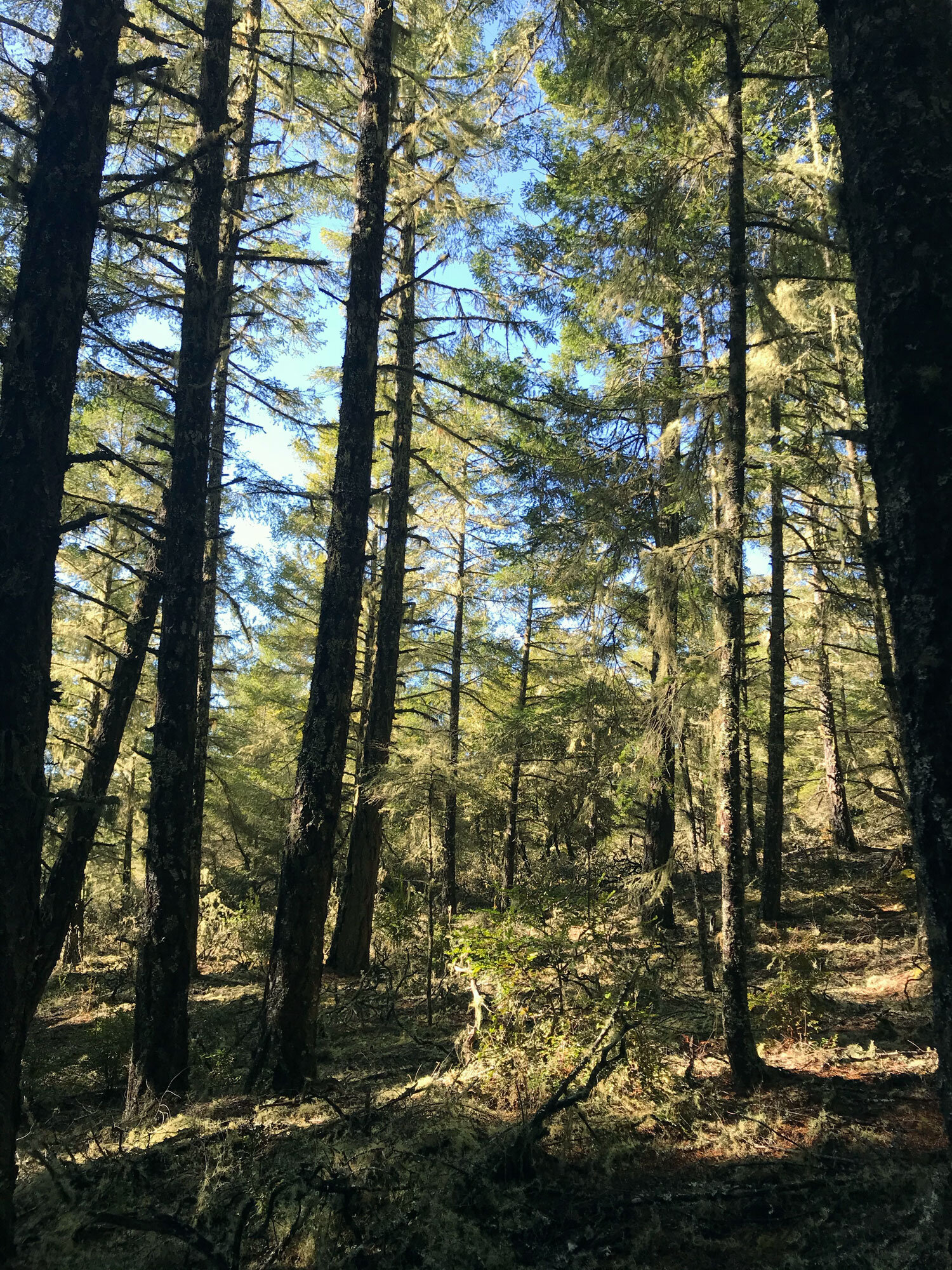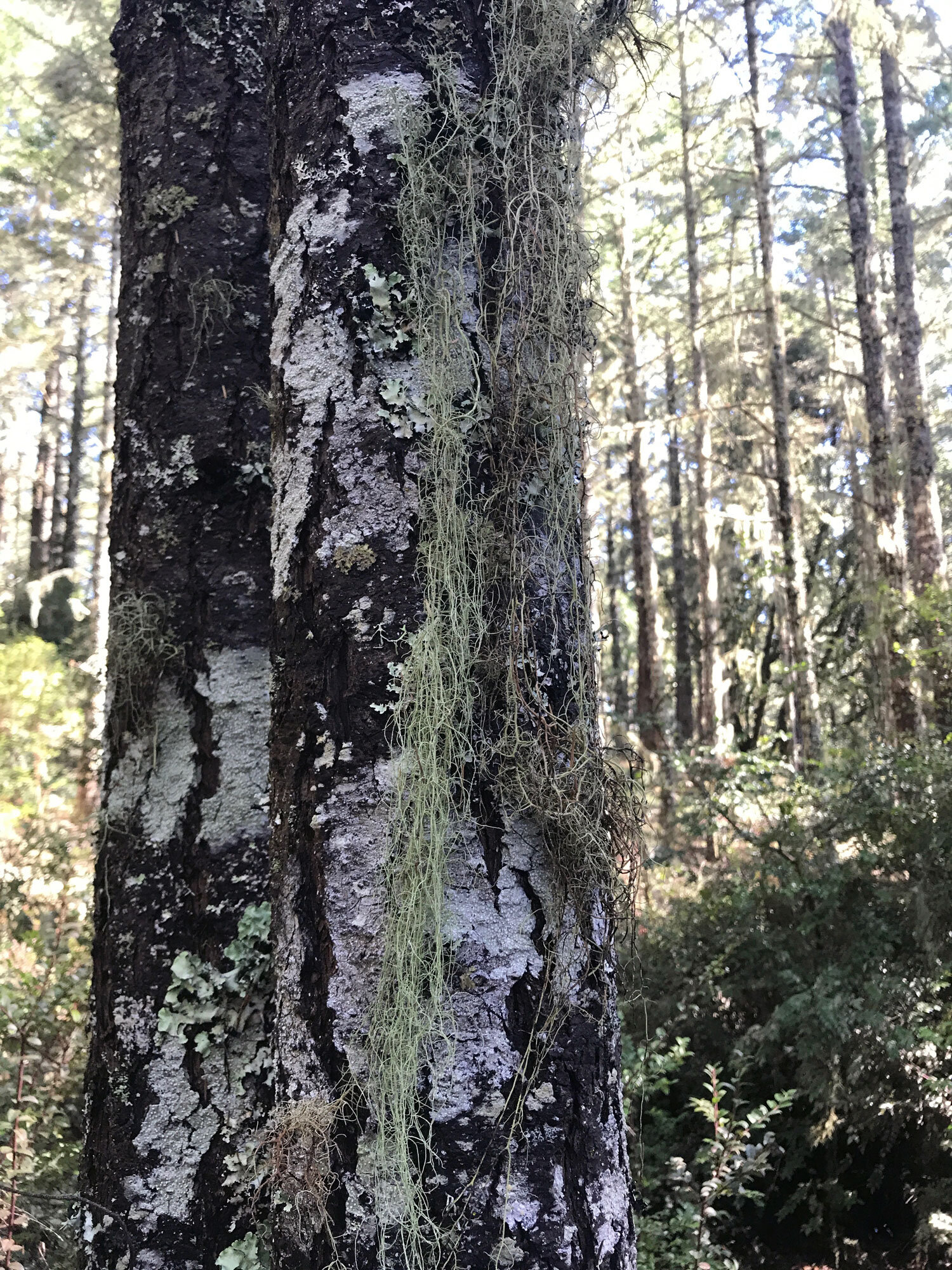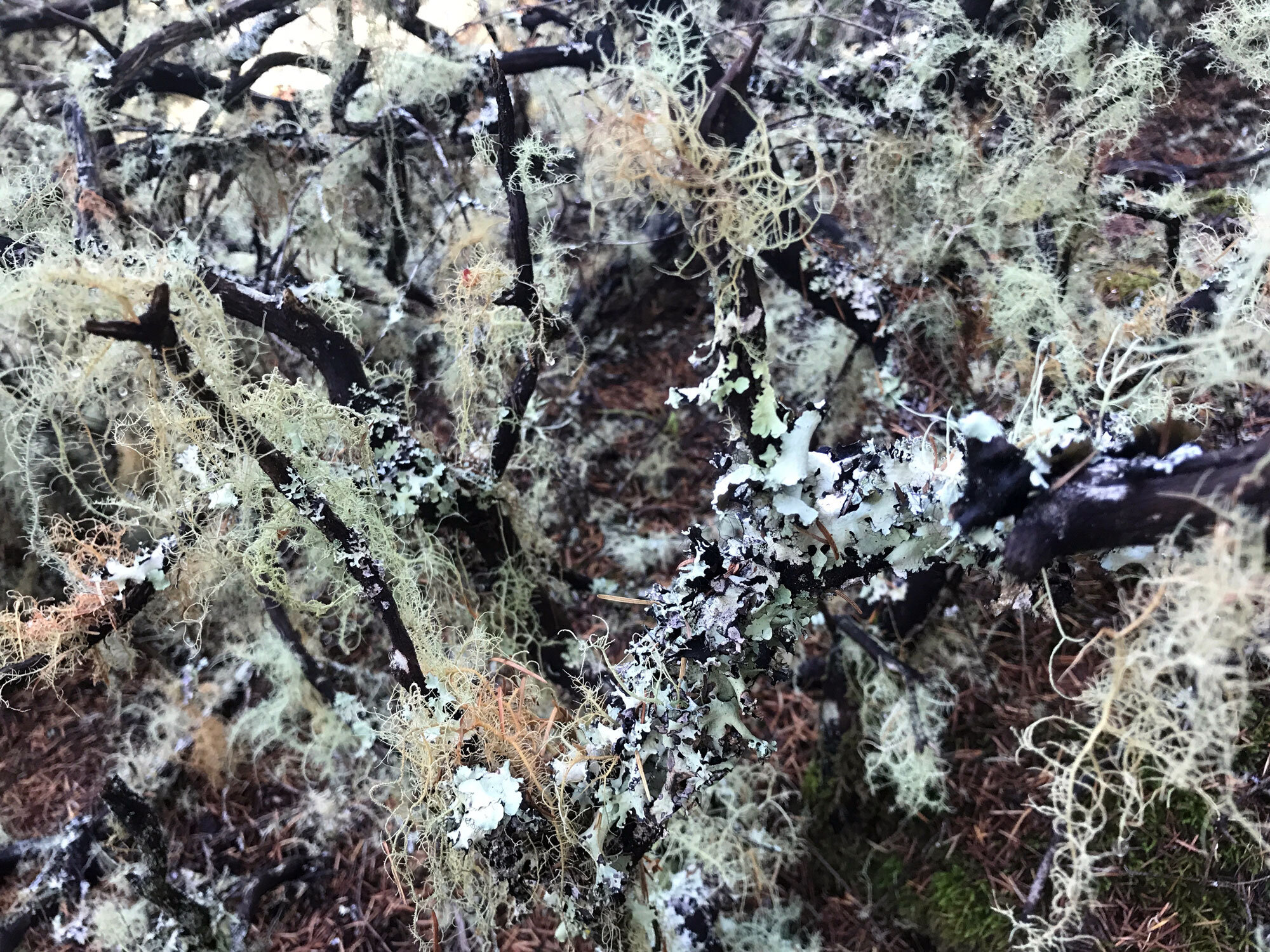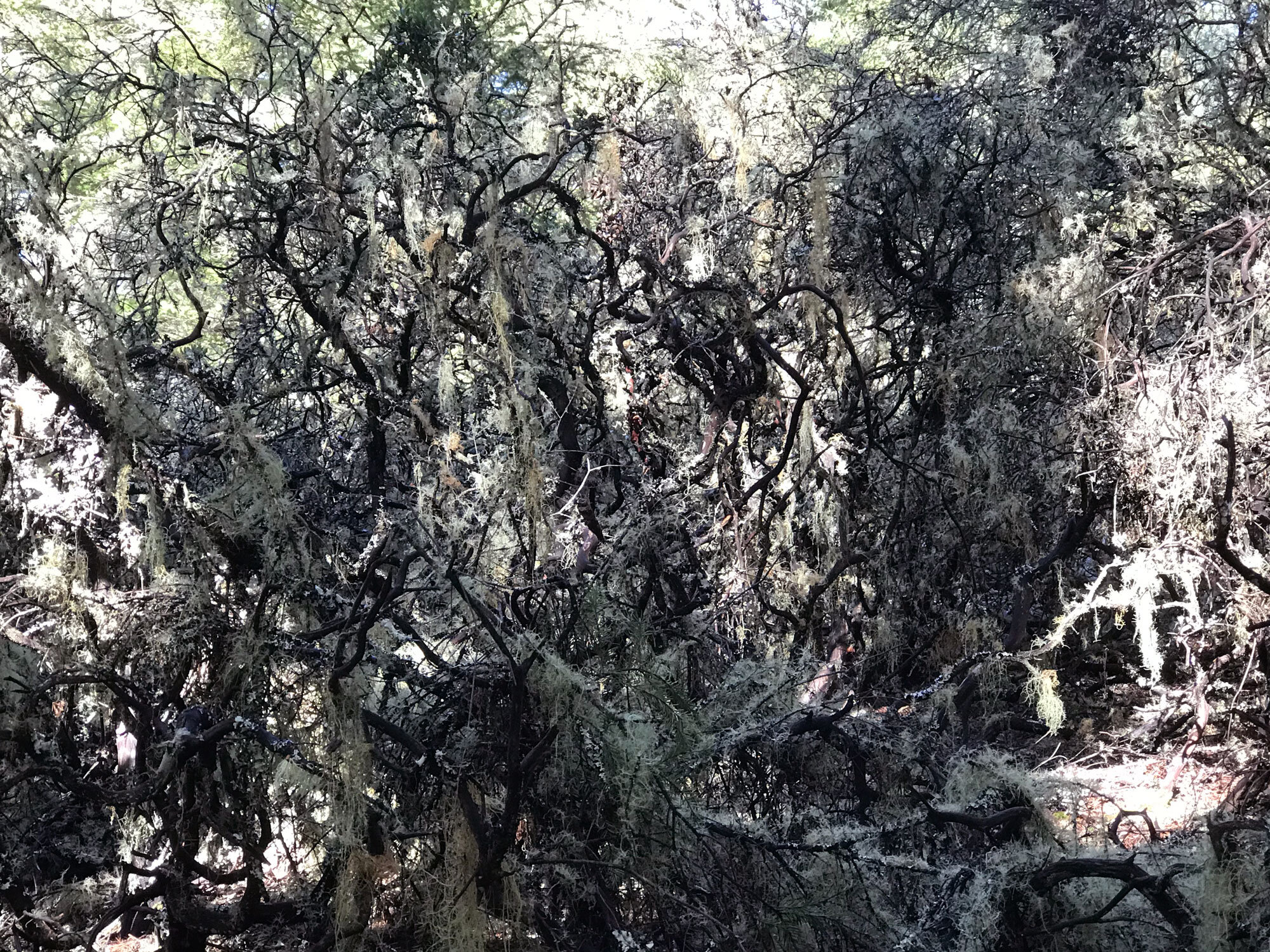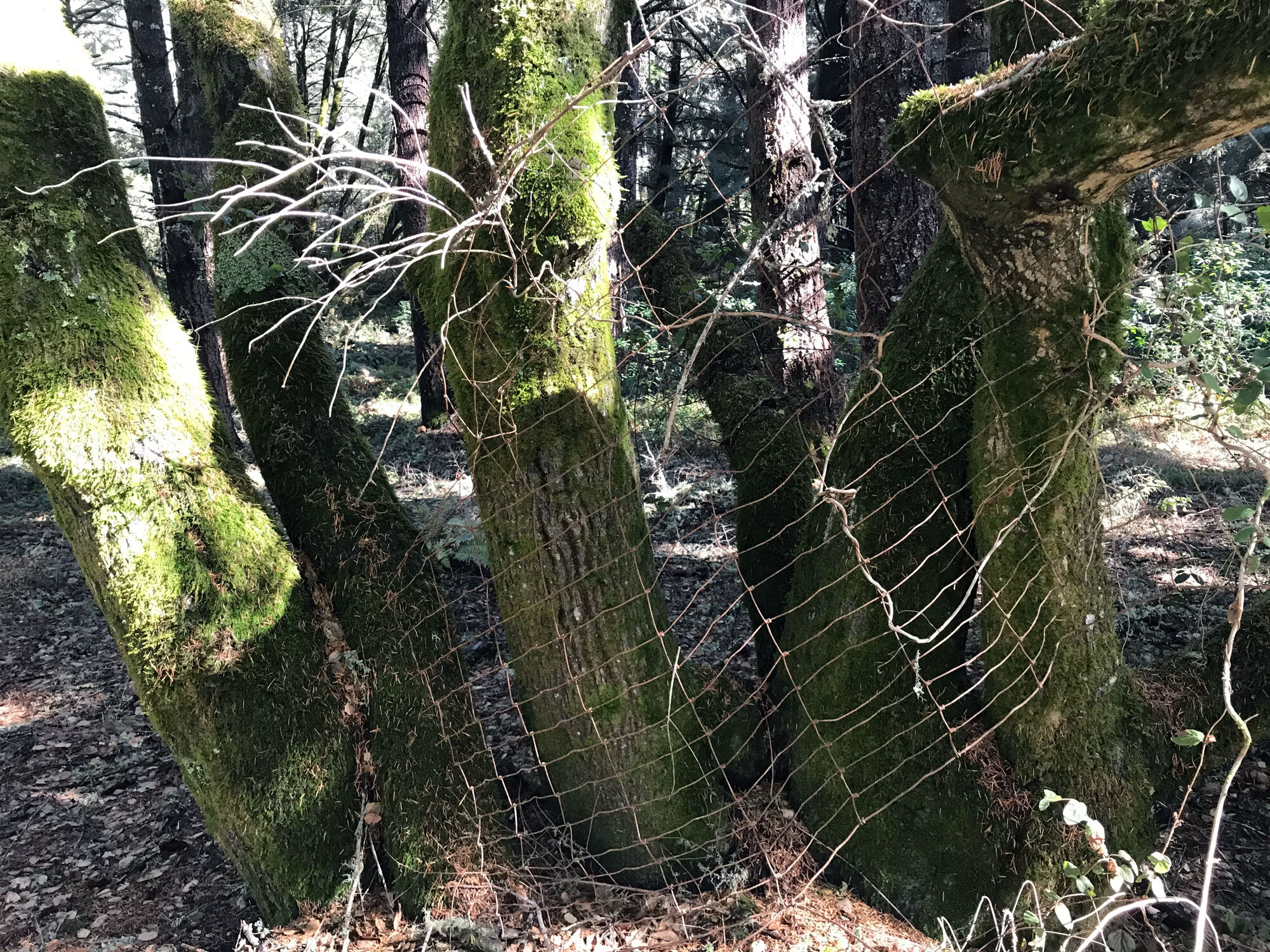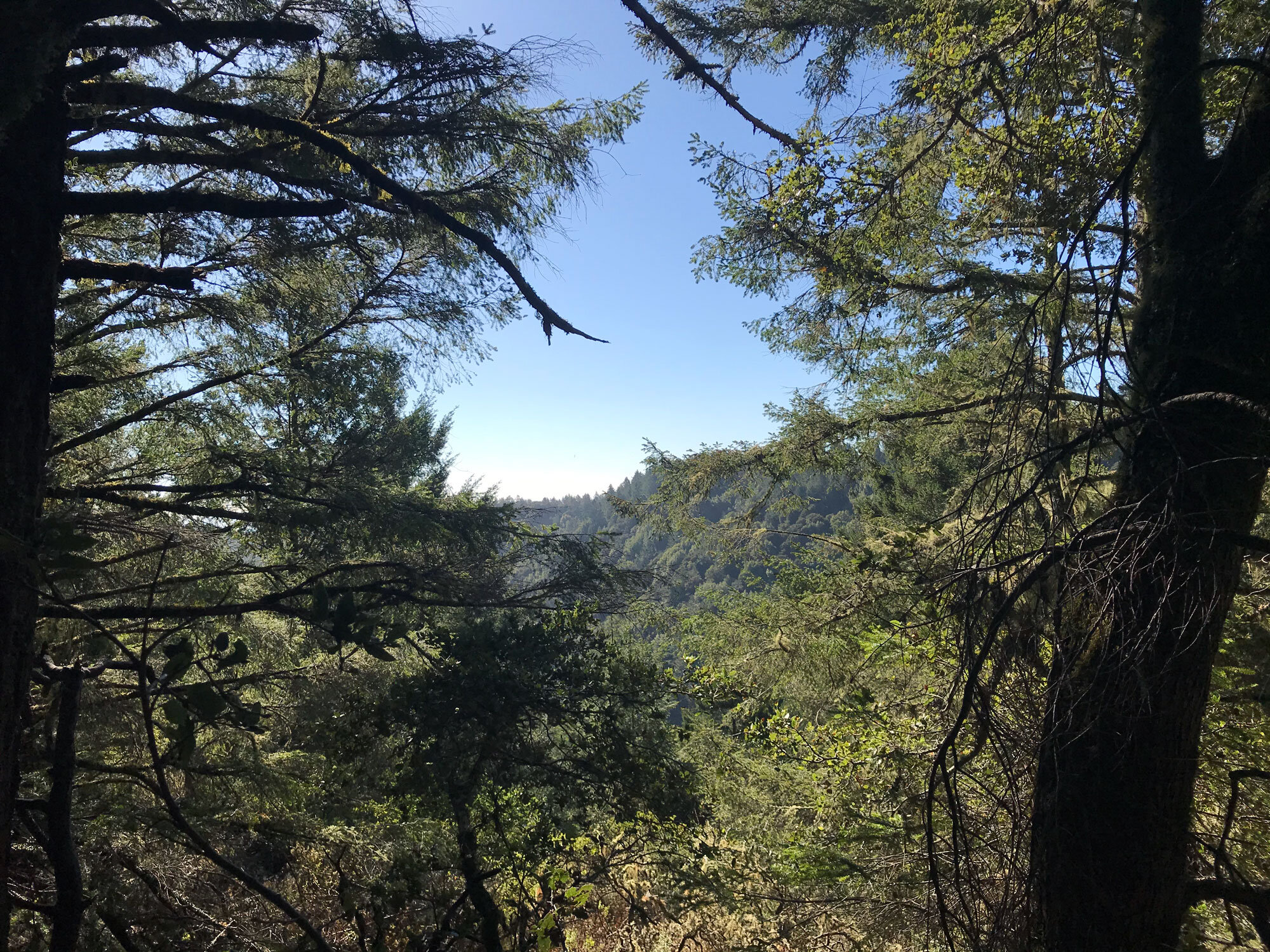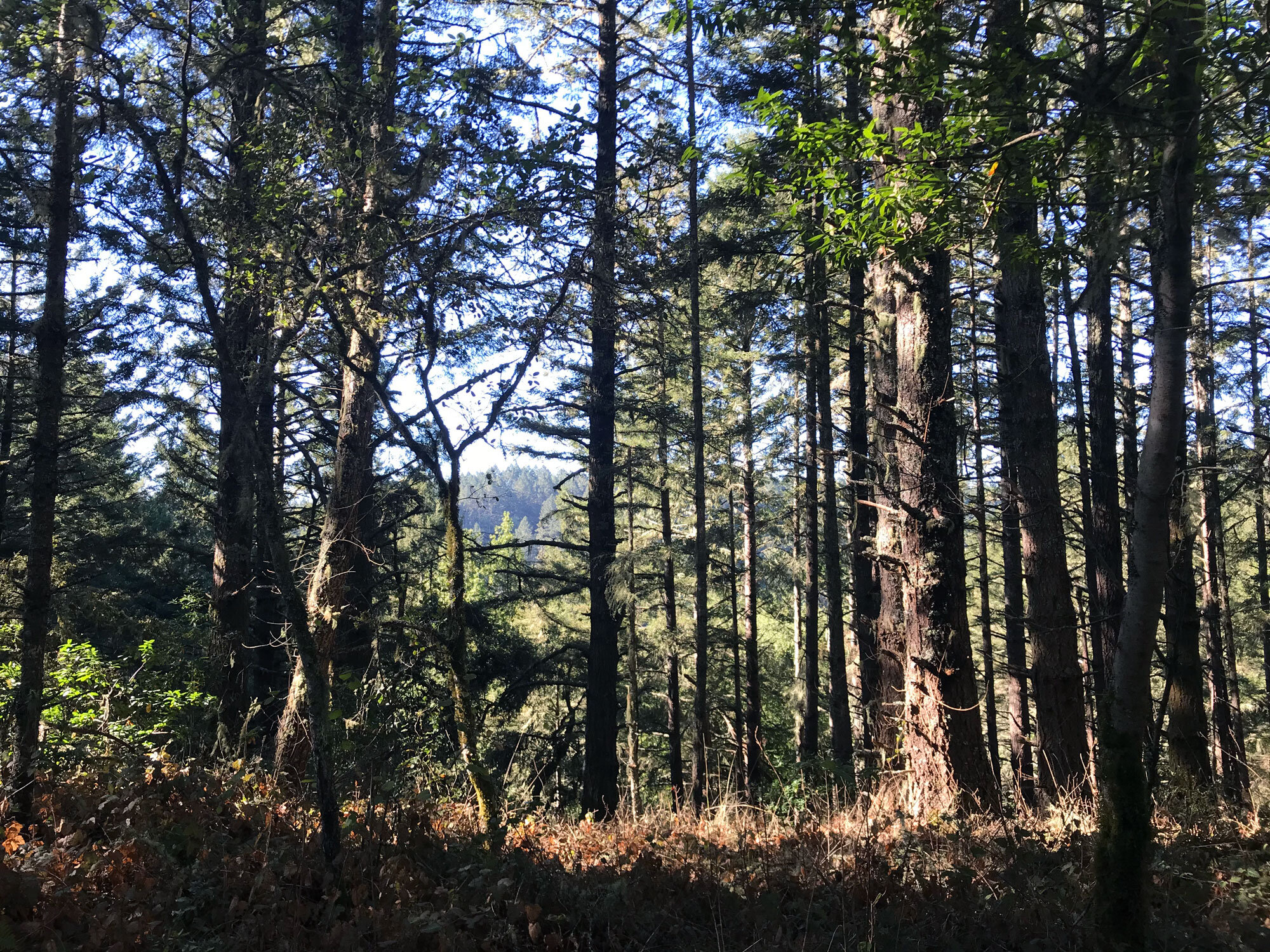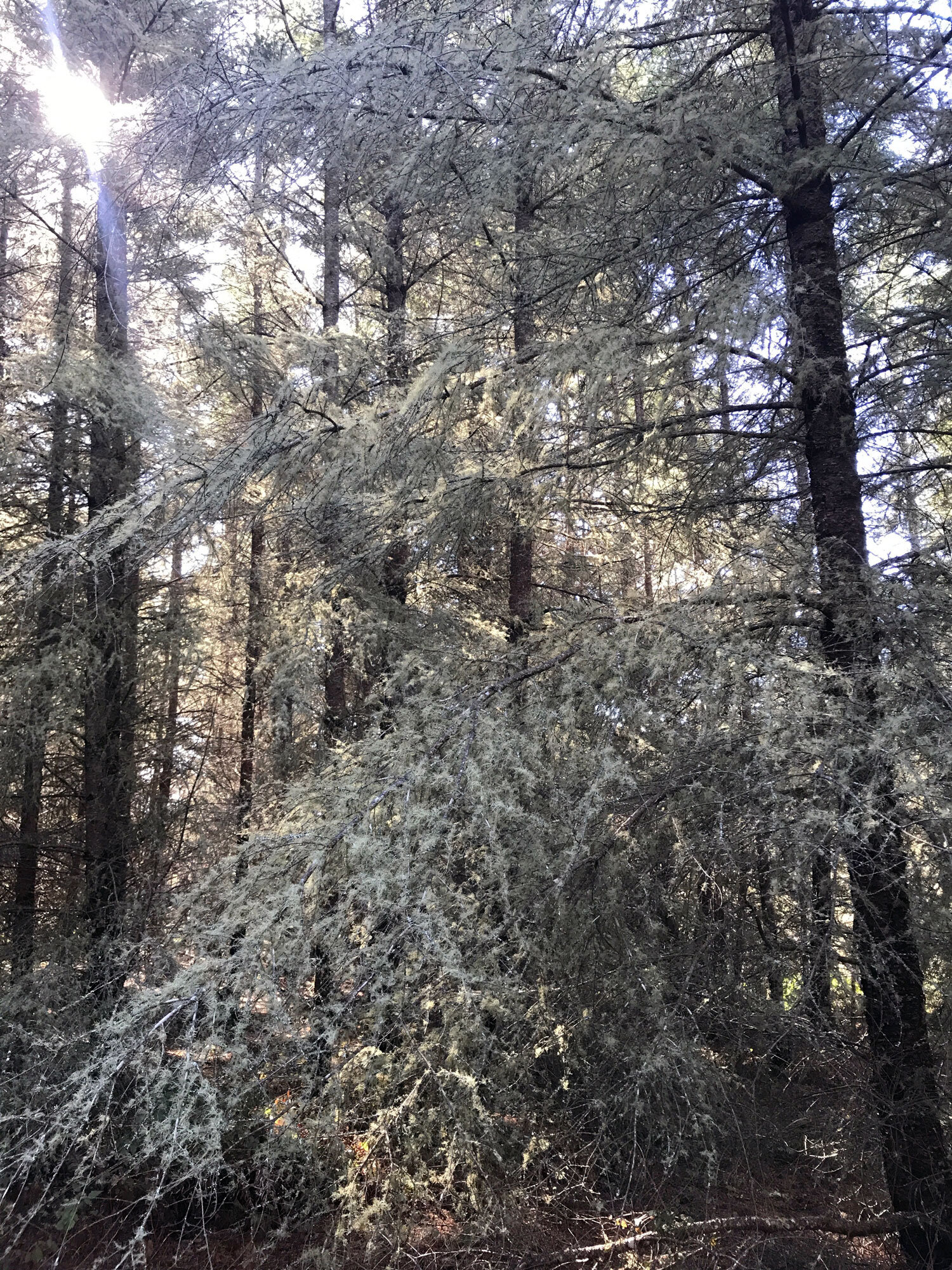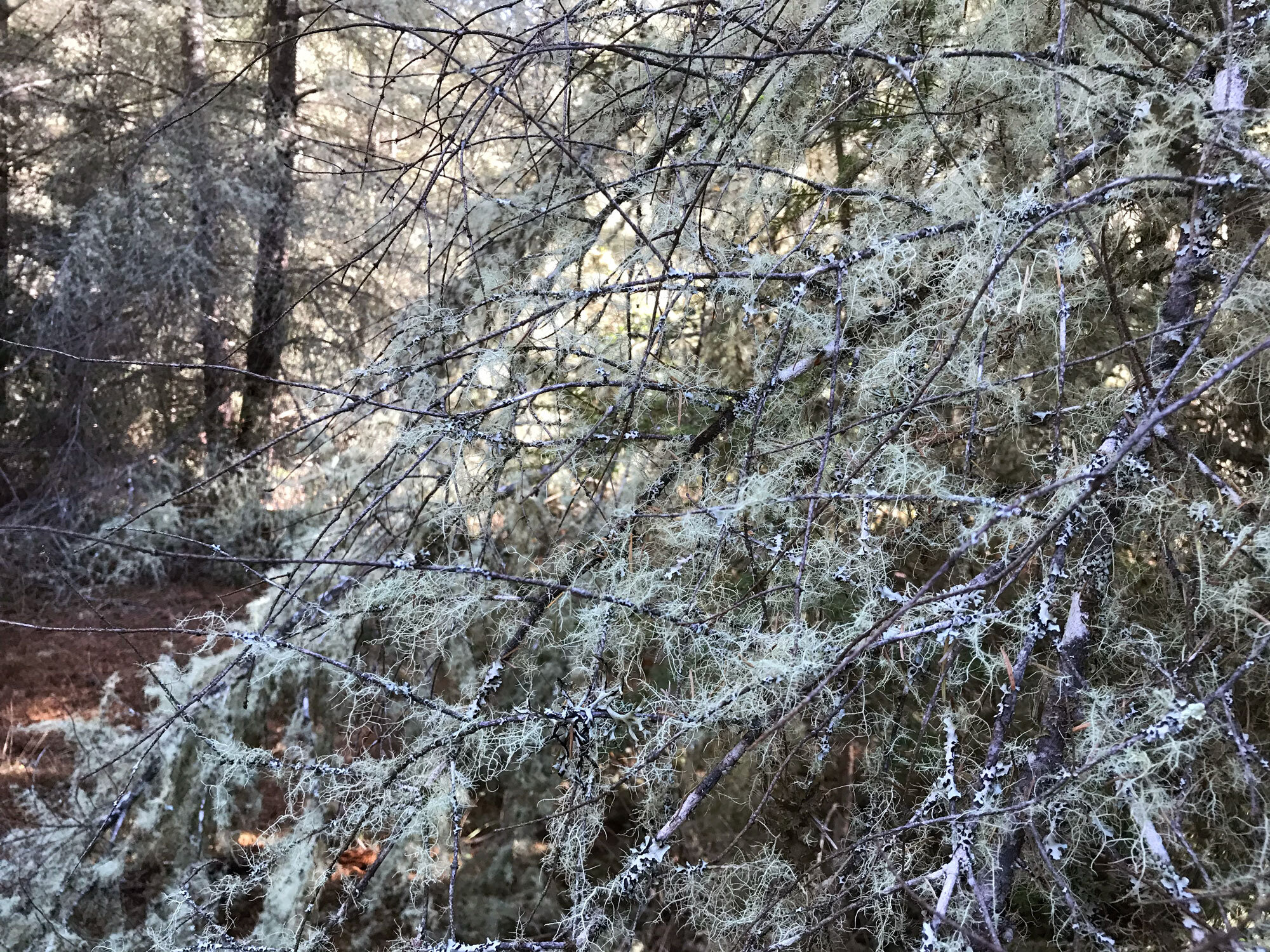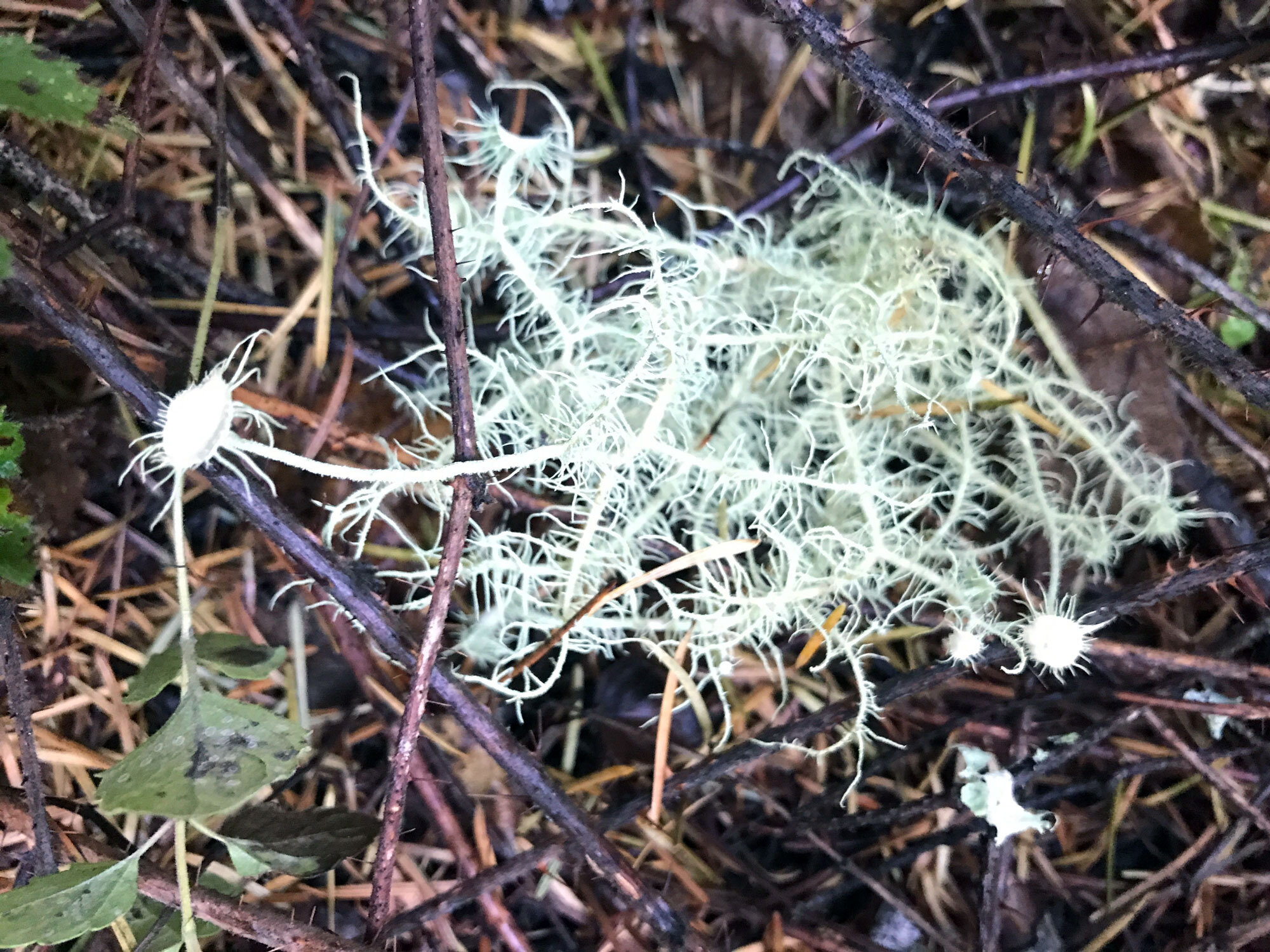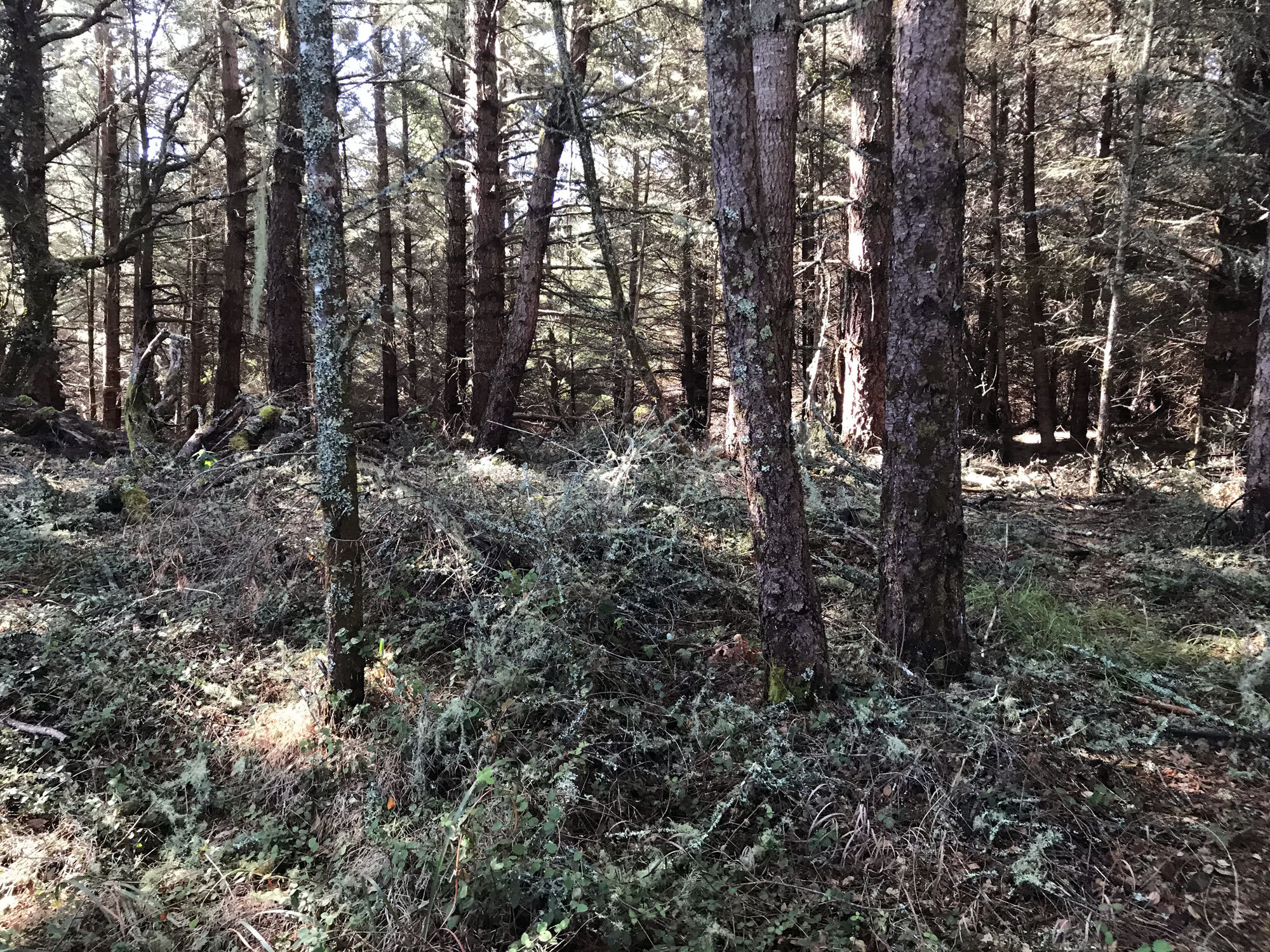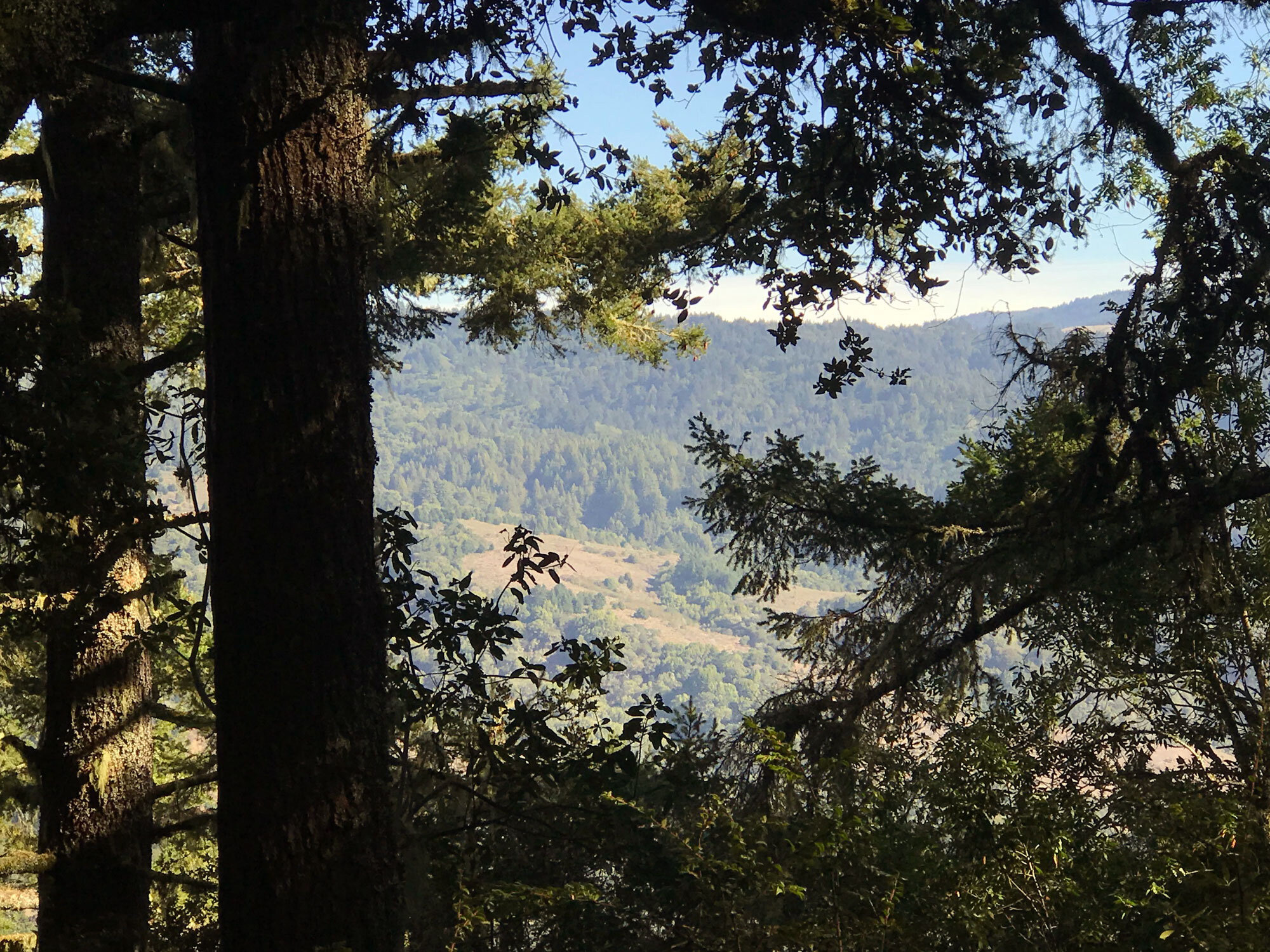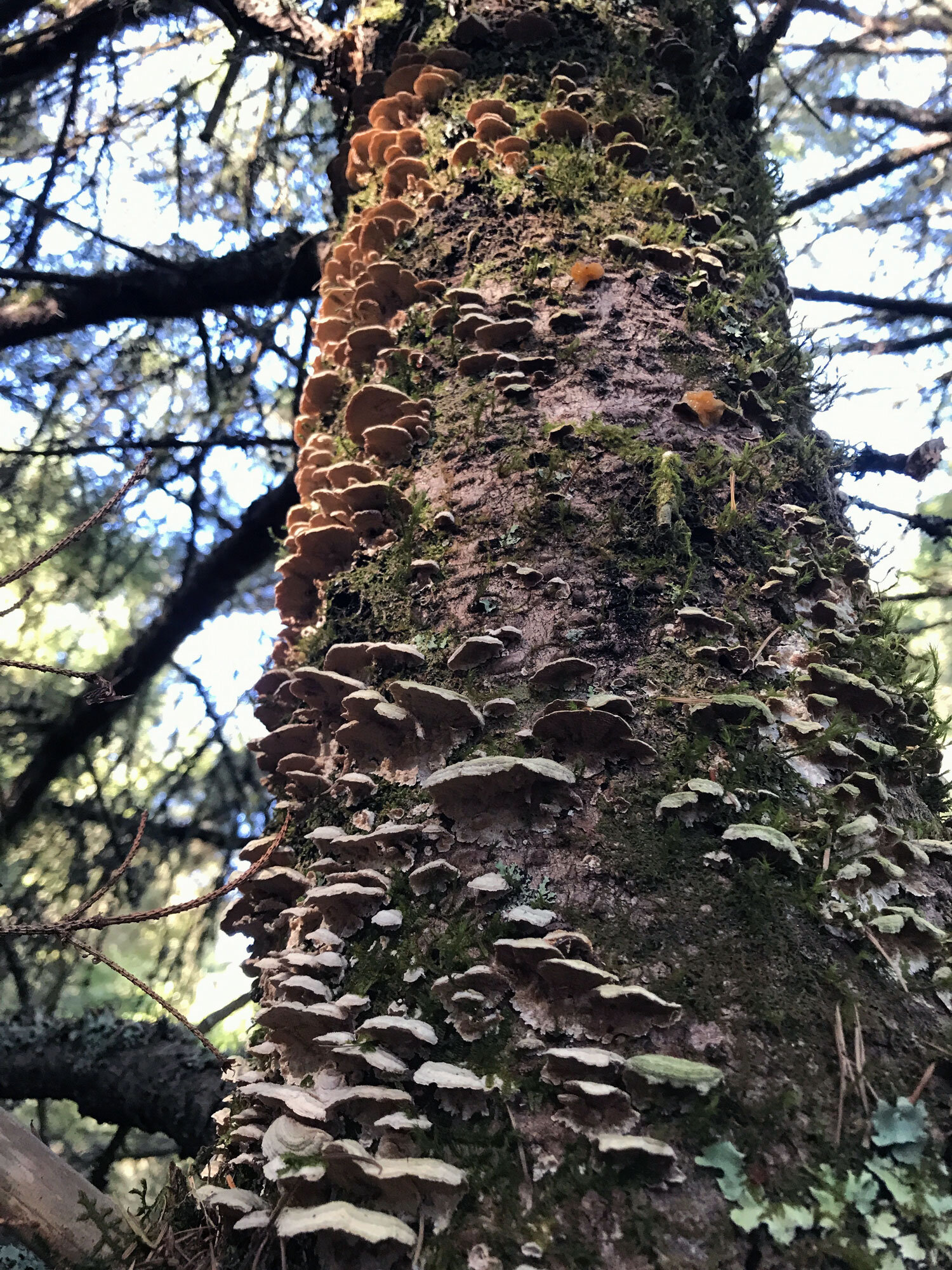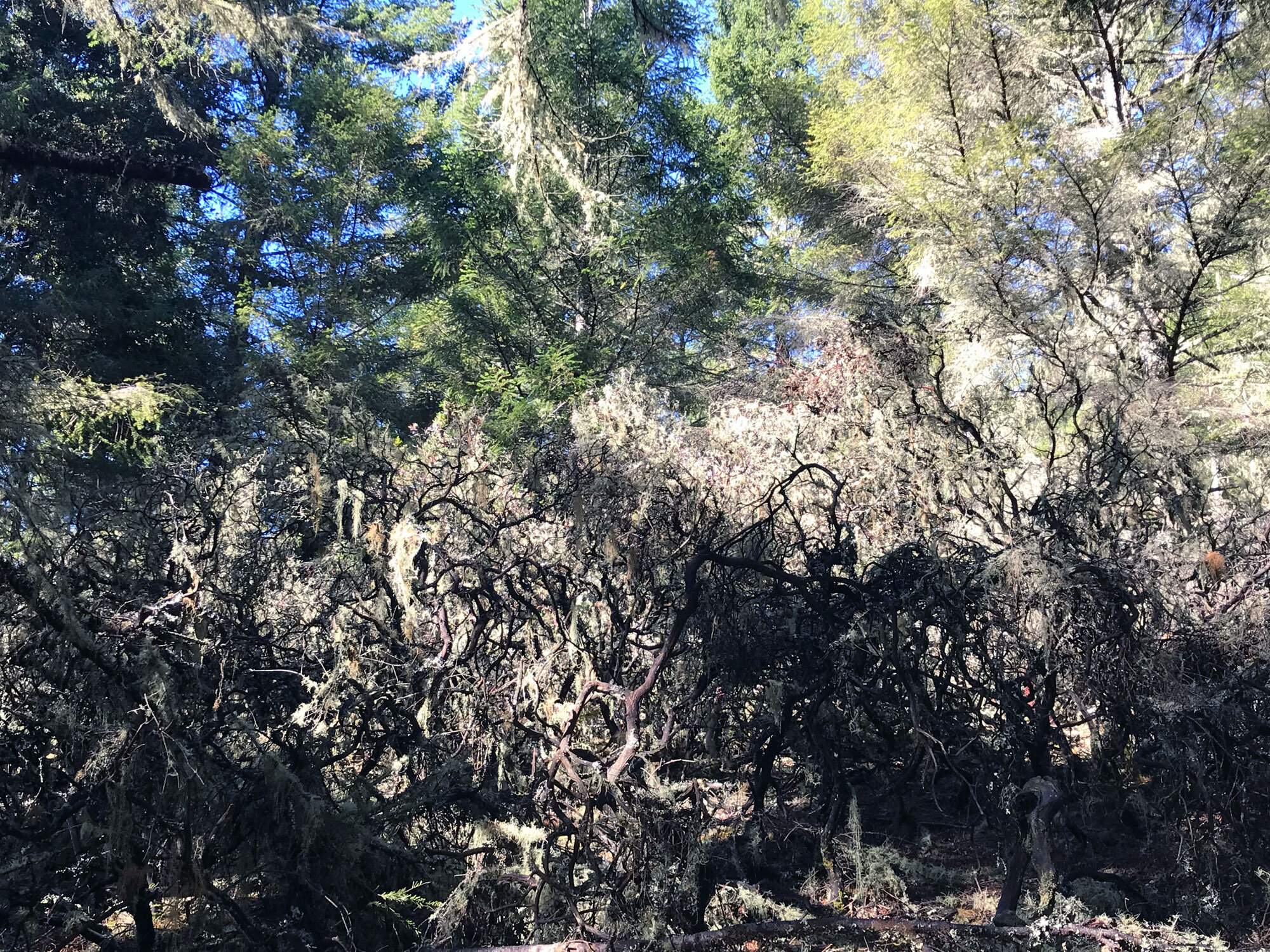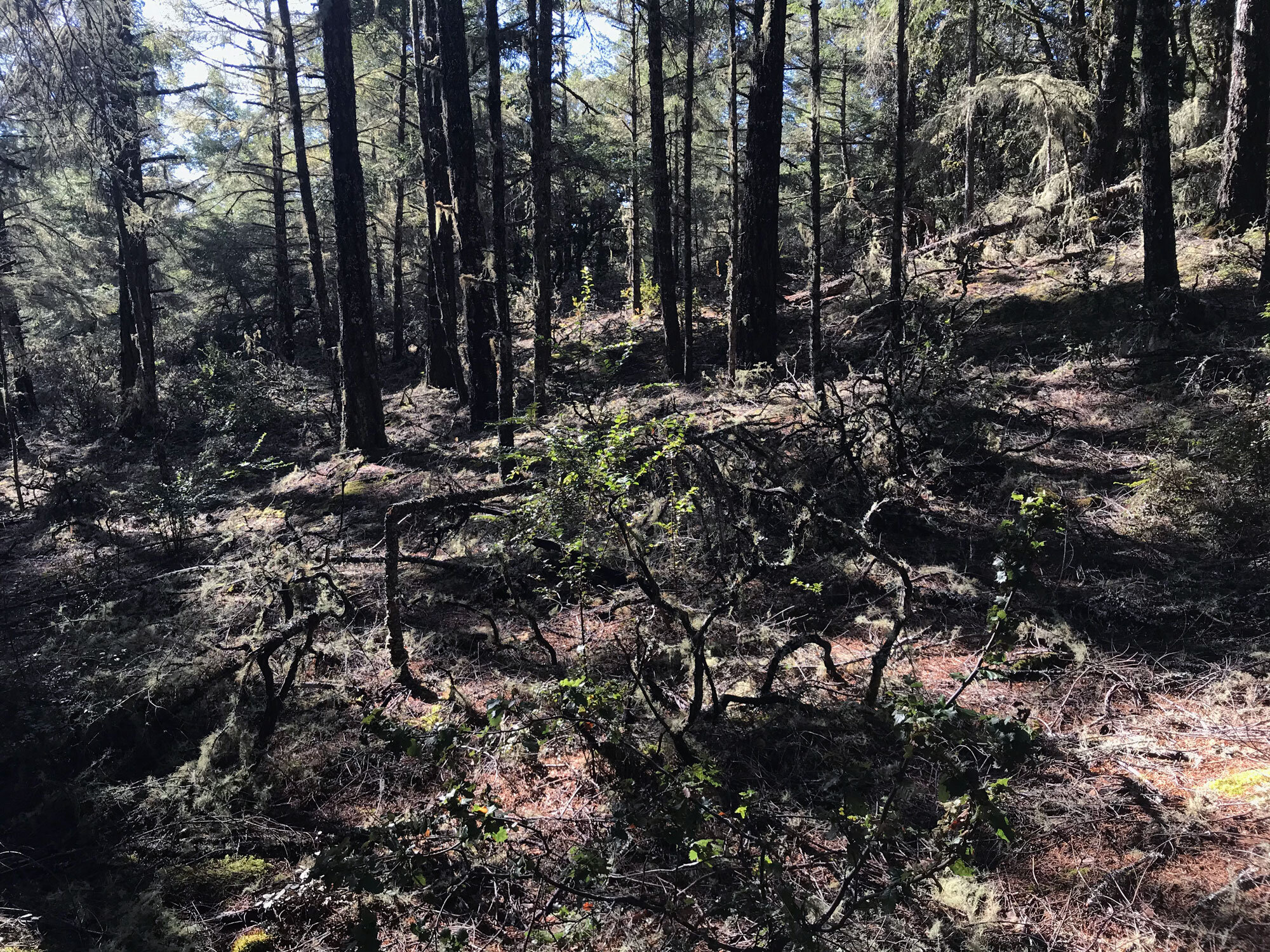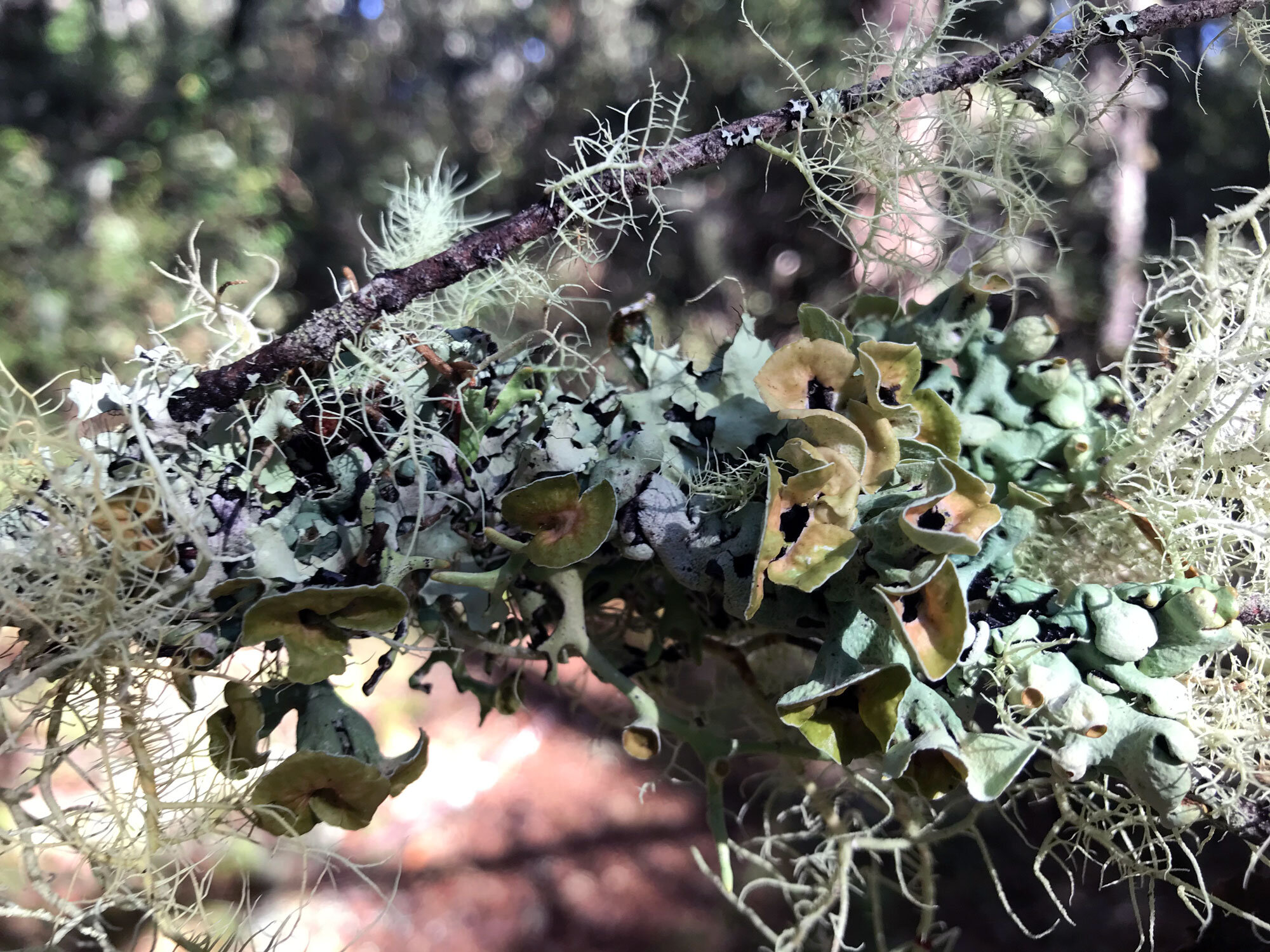Pablo Point Trail
Trail length: 1.0 mile each way, out and back
Terrain: very overgrown, oaks, manzanita, poison oak, stinging nettles
Restroom? No
Parking: park at the Olema Valley Trailhead near Bolinas which has a small pullout area that fits 3 or 4 cars.
Kid friendly? No.
Dates visited: 8/13/18, 11/14/20
Favorite plants on this trail: Toyon (Heteromeles arbutifolia) and manzanitas
Favorite spots: anywhere not covered in stinging nettles and poison oak!
This is the forgotten trail in Point Reyes and for good reason — the first quarter mile of the trail is covered in stinging nettle and poison oak. I was motivated to hike this trail for only one reason — to check it off my list. After I emerged from the ocean of nettles and poison oak, what I encountered was a dry wood filled with dead branches covering the trail and the surrounding terrain. One thing came to my mind — this was a tinderbox. It was eerily beautiful in it’s decay. I could not find anything resembling a view point or trail end. The trail blurred into a grassy open area surrounded by trees. Perhaps in the past, this was an open area with views to the Bolinas Lagoon.
My curiosity got the better of me and I cautiously decided to hike this trail again in November 2020. I’m glad I did. It was an enchanting hike. Most importantly, the nettles were gone and the poison oak was dormant. It was a beautiful, cool fall day with temperatures in the mid-50s, sunny, and no wind. Rather than enduring the stings of nettles, I walked through verdant huckleberry tunnels. Dried up monkey flower, fruiting pink honeysuckle, and trailing blackberry were abundant. This time, I noticed how many oaks are still thriving along this trail. They have not been completely overwhelmed by firs. I could hear woodpeckers and even saw a butterfly soar into the trees. The bare meadow at Pablo Point was filled with fresh California Poppy sprouts and even one blooming poppy. The two highlights of my visit were watching spores disperse in the wind from Western Sword ferns and admiring the “frosty” radiance of lichen-covered Douglas Firs. The firs were filled with white lichen covering most of their branches. See the videos below. I tried to find the actual point but was foiled again. With no marker or apparent trail to follow, I tried two different directions and ended up entangled in fir branches both times. This time I noticed that the manzanita branches curling and bare except for lichen were black. Aha, a fire must have gone through this area. The jumble of bare branches and gnarled manzanita covering the ground looks forlorn like a Halloween backdrop at times. It was counterbalanced by the radiant lichen-filled firs moving ever so gently as I passed through the white tunnel of trees.
The shortest way to access the Pablo Point Trail is to start at the Olema Valley Trailhead near Bolinas and hike 0.5 miles to the Teixeira Trail. Ascend the Teixeira Trail for 1.2 miles to the Pablo Point Trailhead.
Olema Valley to Teixeira to Pablo Point: 5.4 miles, out and back
Starting at the Olema Valley Trailhead (across from the McCurdy Trail), hike 0.5 miles to the Teixeira Trail. Hike 1.2 miles on the Teixeira Trail uphill until the Pablo Point Trail (marker is at a large tree. The trail is to the left). Provided the Pablo Point Trail is not covered in stinging nettles and poison oak, hike the 1.0 mile trail to the meadow. Turn around and reverse the route back.
Volunteer Opportunity: Habitat Restoration
Join the Habitat Restoration Program (HRP) at Point Reyes National Seashore to help protect and restore endangered plant and wildlife habitat at Abbotts Lagoon, the Lighthouse Bluffs, the Estero area, and other high-value habitat areas at Point Reyes National Seashore. Visit some of the most beautiful areas in the park and learn about local plant ecology while you work alongside park staff to carry out ecological restoration projects. Get involved, meet new people, and make a positive impact on your environment!


